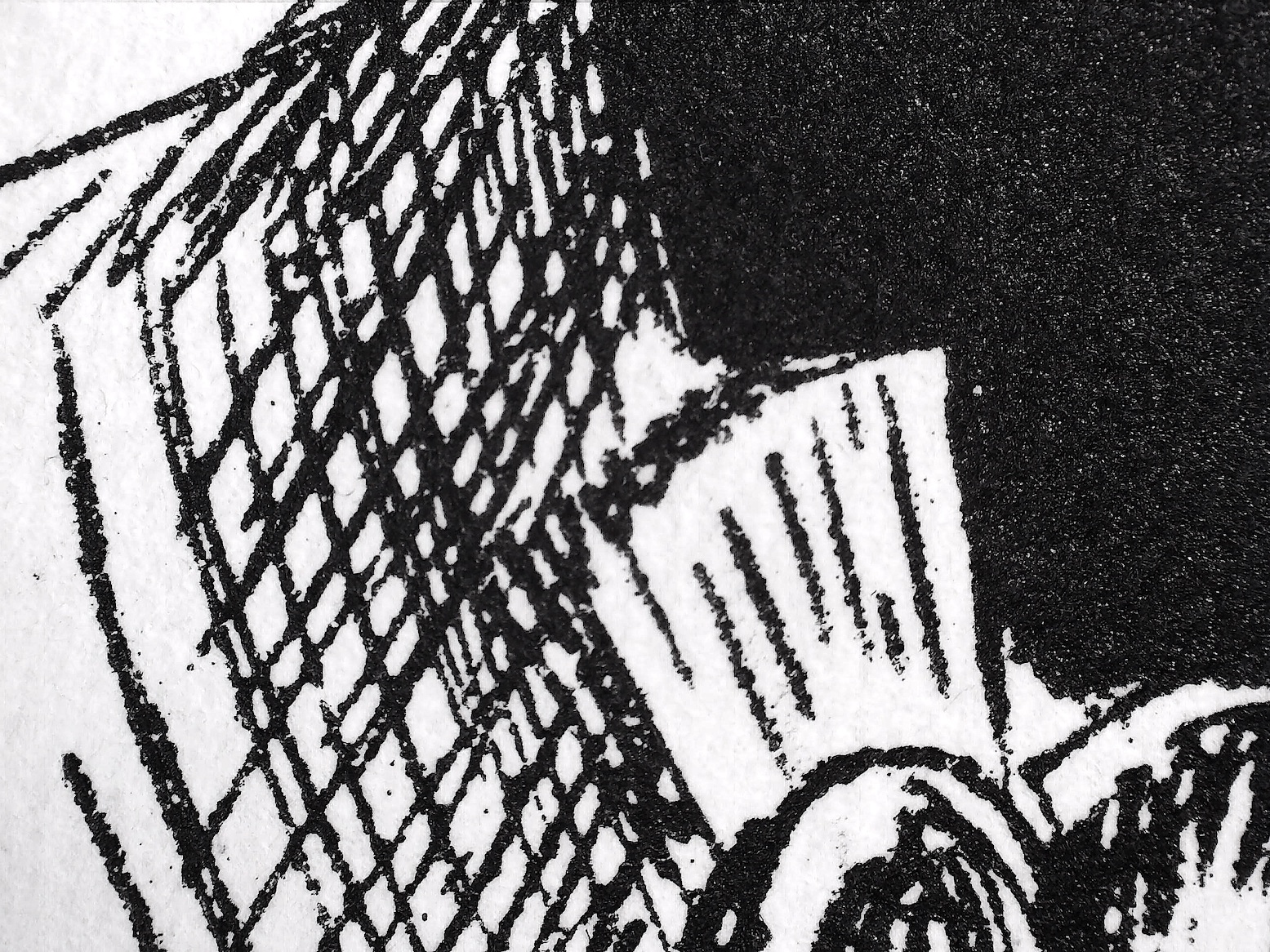-
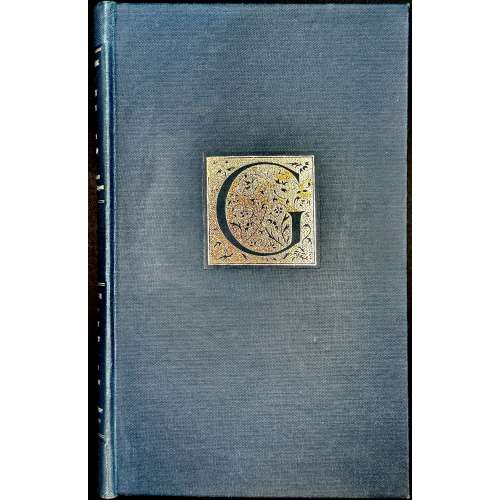 NEWHardcover volume 220 x 143 mm, bound in dark blue cloth with gilt square monogram to front and gilt lettering to spine, aubergine endpapers, top edge gilt; pagination: [2] limitation leaf bound in, [4] 1-192, 1-48 (total 246 pages), plus 12 loose colour plates 133 x 102 mm tipped-in to the pocket in the rear pastedown. Limited edition of 250 copies, of which this is № 244. Title-page: CATALOGUE | DU | CABINET SECRET DU PRINCE G*** | — | COLLECTION DE LIVRES | ET | OBJETS CURIEUX ET RARES | CONCERNANT | L'AMOUR, LES FEMMES | ET LE MARIAGE | AVEC LES PRIX DE VENTE | (in rules) PREMIÈRE PARTIE | BRUXELLES | M DCCC LXXXVII || Contra-title: CATALOGUE | OF THE | SECRET CABINET OF PRINCE G*** | [GALITZIN] | — | COLLECTION OF BOOKS | AND | CURIOUS AND RARE OBJECTS | CONCERNING | LOVE, WOMEN | AND MARRIAGE | INCLUDING THE SALE PRICE | — | WITH AN INTRODUCTION | TO THIS EDITION BY | W. N. SCHORS | LONDON | CHARLES SKILTON | MDCCCCLXXV || Limitation: EDITION LIMITED TO | 250 COPIES | of which this is | No. 244 | The Coloured Illustrations with this reprint | are reproductions of twelve of the lithographs | by Devéria listed as No. 115 on page 30 of the | Supplement || Imprint: Introduction copyright by W. N. Schors, 1975 | Limited Edition of 250 copies | made and printed by Lewis Reprints Ltd | Tonbridge, Kent | and published by | CHARLES SKILTON LTD | 90 The Broadway, London SW19 || Contributors: Gustave Lehec (French, 1841 – 1922) Charles Skilton (British, c.1922 – 1990)
NEWHardcover volume 220 x 143 mm, bound in dark blue cloth with gilt square monogram to front and gilt lettering to spine, aubergine endpapers, top edge gilt; pagination: [2] limitation leaf bound in, [4] 1-192, 1-48 (total 246 pages), plus 12 loose colour plates 133 x 102 mm tipped-in to the pocket in the rear pastedown. Limited edition of 250 copies, of which this is № 244. Title-page: CATALOGUE | DU | CABINET SECRET DU PRINCE G*** | — | COLLECTION DE LIVRES | ET | OBJETS CURIEUX ET RARES | CONCERNANT | L'AMOUR, LES FEMMES | ET LE MARIAGE | AVEC LES PRIX DE VENTE | (in rules) PREMIÈRE PARTIE | BRUXELLES | M DCCC LXXXVII || Contra-title: CATALOGUE | OF THE | SECRET CABINET OF PRINCE G*** | [GALITZIN] | — | COLLECTION OF BOOKS | AND | CURIOUS AND RARE OBJECTS | CONCERNING | LOVE, WOMEN | AND MARRIAGE | INCLUDING THE SALE PRICE | — | WITH AN INTRODUCTION | TO THIS EDITION BY | W. N. SCHORS | LONDON | CHARLES SKILTON | MDCCCCLXXV || Limitation: EDITION LIMITED TO | 250 COPIES | of which this is | No. 244 | The Coloured Illustrations with this reprint | are reproductions of twelve of the lithographs | by Devéria listed as No. 115 on page 30 of the | Supplement || Imprint: Introduction copyright by W. N. Schors, 1975 | Limited Edition of 250 copies | made and printed by Lewis Reprints Ltd | Tonbridge, Kent | and published by | CHARLES SKILTON LTD | 90 The Broadway, London SW19 || Contributors: Gustave Lehec (French, 1841 – 1922) Charles Skilton (British, c.1922 – 1990) -
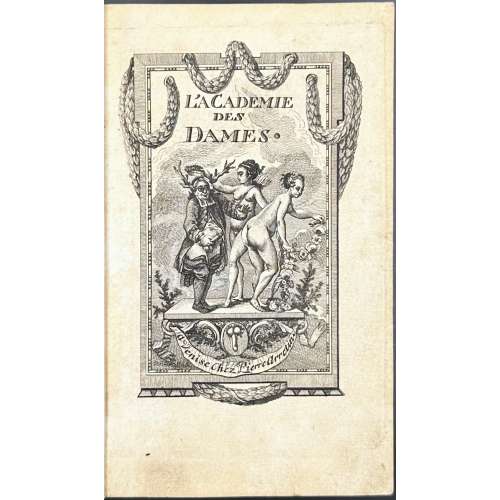 A set of two volumes, one with the text (1) and another with the plates (2), cased in a red ‘romantic’ fitting box of red morocco, lavishly tooled in gilt, c. 1840, more recently adapted to house two books of different size. Vol.1: Hardcover volume, 22.4 x 14 cm, 8vo, bound in half black polished calf (late 19th century) over marbled boards, spine and corners gilt-tooled, raised bands, gilt lozenges in compartments, gilt-lettered red morocco label; marbled endpapers; Francis M. G. Mauleverer armorial bookplate (motto “Deus Providebit”) to front pastedown. Printed on laid paper, Collation: 1 blank, engraved frontis., engraved t.p., A-Cc8 Dd2, 1 blank; pagination:[1] 2-420. Vol. 2: Hardcover volume, 21 x 14 cm, bound in green straight-grain morocco (early 19th century), boards with a roll-tooled palmette border, spine decorated in gilt, blue moiré endpapers, yellow feps, additional blank leaves: 2 in the front and 4 in the back, unpaginated; engraved frontis. and t.p. as in vol. 2, plus 35 plates now attributed to Delcroche printed on India paper, pasted on thicker leaves and bound in numerical order, but pl. 34 after pl. 35; As per Christie’s “The prints, sometimes attributed to de Hooghe, are actually by Delcroche, who illustrated a number of classics in the 1770s and 1780s, including Fanny Hill. AE and ABPC record only three copies of this edition at auction, including the Nordmann and Hayoit copies. Apollinaire Enfer, 277; Dutel A-15; Eros invaincu 16; Foxon Libertine Literature, NY: 1965, p.38; Gay-Lemonnyer I, 10; Pia Enfer, 346.” Contributors: Delcroche (Dutch, 17th century), “artiste hollandaise”, nothing else is known. Dutel and Nordmann attribute the plates to Romeyn de Hooghe (Dutch, 1645 – 1708). Nicolas Chorier (French, 1612 – 1692) – author. Francis M. G. Mauleverer (British, 1918 – 1962) – provenance. Seller’s description: 2 vols in 8vo (215x125 and 204x117 mm), a complete but composite set, the text volume in late 19th c. half black morocco, with corners, gilt spine tooled in gold, the plate volume in a nice early 19th-century green morocco binding, the spine gilt-tooled in compartments, the sides with a roll-tooled palmette border, pale blue moiré style endpapers (hinges repaired). Text vol.: engraved frontispiece, engr. title, pp. 420. Plates vol. comprising: the engraved title, frontispiece, and 35 engraved plates, probably by Delcroche. Both volumes cased in a ‘romantic’ fitting box binding, c. 1840, more recently adapted.
A set of two volumes, one with the text (1) and another with the plates (2), cased in a red ‘romantic’ fitting box of red morocco, lavishly tooled in gilt, c. 1840, more recently adapted to house two books of different size. Vol.1: Hardcover volume, 22.4 x 14 cm, 8vo, bound in half black polished calf (late 19th century) over marbled boards, spine and corners gilt-tooled, raised bands, gilt lozenges in compartments, gilt-lettered red morocco label; marbled endpapers; Francis M. G. Mauleverer armorial bookplate (motto “Deus Providebit”) to front pastedown. Printed on laid paper, Collation: 1 blank, engraved frontis., engraved t.p., A-Cc8 Dd2, 1 blank; pagination:[1] 2-420. Vol. 2: Hardcover volume, 21 x 14 cm, bound in green straight-grain morocco (early 19th century), boards with a roll-tooled palmette border, spine decorated in gilt, blue moiré endpapers, yellow feps, additional blank leaves: 2 in the front and 4 in the back, unpaginated; engraved frontis. and t.p. as in vol. 2, plus 35 plates now attributed to Delcroche printed on India paper, pasted on thicker leaves and bound in numerical order, but pl. 34 after pl. 35; As per Christie’s “The prints, sometimes attributed to de Hooghe, are actually by Delcroche, who illustrated a number of classics in the 1770s and 1780s, including Fanny Hill. AE and ABPC record only three copies of this edition at auction, including the Nordmann and Hayoit copies. Apollinaire Enfer, 277; Dutel A-15; Eros invaincu 16; Foxon Libertine Literature, NY: 1965, p.38; Gay-Lemonnyer I, 10; Pia Enfer, 346.” Contributors: Delcroche (Dutch, 17th century), “artiste hollandaise”, nothing else is known. Dutel and Nordmann attribute the plates to Romeyn de Hooghe (Dutch, 1645 – 1708). Nicolas Chorier (French, 1612 – 1692) – author. Francis M. G. Mauleverer (British, 1918 – 1962) – provenance. Seller’s description: 2 vols in 8vo (215x125 and 204x117 mm), a complete but composite set, the text volume in late 19th c. half black morocco, with corners, gilt spine tooled in gold, the plate volume in a nice early 19th-century green morocco binding, the spine gilt-tooled in compartments, the sides with a roll-tooled palmette border, pale blue moiré style endpapers (hinges repaired). Text vol.: engraved frontispiece, engr. title, pp. 420. Plates vol. comprising: the engraved title, frontispiece, and 35 engraved plates, probably by Delcroche. Both volumes cased in a ‘romantic’ fitting box binding, c. 1840, more recently adapted. -
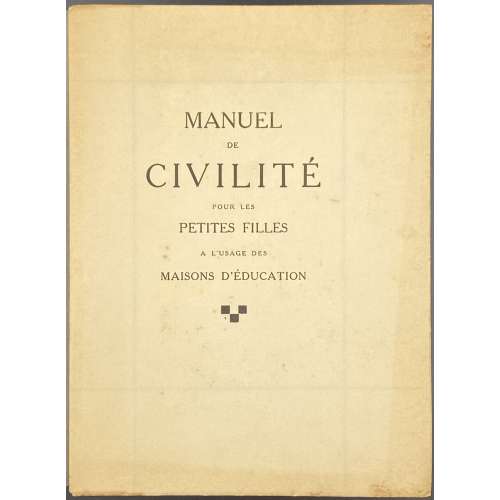 Softcover, collated 8vo, 19.5 x 14.2 cm, French flapped wrappers, lettering to front: MANUEL | DE | CIVILITÉ | POUR LES | PETITES FILLES | À L’USAGE DES | MAISONS D’ÉDUCATION | {checks} ||; printed on BFK Rives wove paper with watermark, with blue vertical and horizontal lines to imitate notebook checkered paper; pp.: [8] [1-15] 16-177 [7]; π4 1-118 124; total 96 leaves (192 pages), incl. those in wrappers. Cardboard double slipcase with vellum spine lettered in black: MANUEL | DE | CIVILITÉ | POUR | LES PETITES | FILLES ||. Title-page: similar to cover, within the frame: MANUEL | DE | CIVILITÉ | POUR LES | PETITES FILLES | À L’USAGE DES | MAISONS D’ÉDUCATION | {checks} || Edition: 1st clandestine limited edition of 600 copies of which 1 copy on papier de chine (№ 1), 15 copies on japon impérial (№№ 2-16), 20 copies on papier de Hollande (№№ 17-36), and 564 copies on vélin de Rives (№№ 37-600) ; this is copy № 473. Enrichment: Accompanied by 5 loose sheets of thin paper blind stamped in the upper-left corner “WHATMAN” with pencil and watercolour drawings, one on both sides, unsigned. Insert two printouts from the previous sellers. Catalogue raisonné: Pia 800/801; Dutel (III) 1916 (indicates 180 pp.). Nordmann II 315 describes copy № 246 illustrated with 86 compositions by Rojankovsky, all signed by Rojan. Later edition, see: LIB-2972.2022. Contributors: Pierre Louÿs (French, 1870 – 1925) Feodor Rojankovsky [Rojan, Фёдор Степанович Рожанковский] (Russian-American, 1891 – 1970).
Softcover, collated 8vo, 19.5 x 14.2 cm, French flapped wrappers, lettering to front: MANUEL | DE | CIVILITÉ | POUR LES | PETITES FILLES | À L’USAGE DES | MAISONS D’ÉDUCATION | {checks} ||; printed on BFK Rives wove paper with watermark, with blue vertical and horizontal lines to imitate notebook checkered paper; pp.: [8] [1-15] 16-177 [7]; π4 1-118 124; total 96 leaves (192 pages), incl. those in wrappers. Cardboard double slipcase with vellum spine lettered in black: MANUEL | DE | CIVILITÉ | POUR | LES PETITES | FILLES ||. Title-page: similar to cover, within the frame: MANUEL | DE | CIVILITÉ | POUR LES | PETITES FILLES | À L’USAGE DES | MAISONS D’ÉDUCATION | {checks} || Edition: 1st clandestine limited edition of 600 copies of which 1 copy on papier de chine (№ 1), 15 copies on japon impérial (№№ 2-16), 20 copies on papier de Hollande (№№ 17-36), and 564 copies on vélin de Rives (№№ 37-600) ; this is copy № 473. Enrichment: Accompanied by 5 loose sheets of thin paper blind stamped in the upper-left corner “WHATMAN” with pencil and watercolour drawings, one on both sides, unsigned. Insert two printouts from the previous sellers. Catalogue raisonné: Pia 800/801; Dutel (III) 1916 (indicates 180 pp.). Nordmann II 315 describes copy № 246 illustrated with 86 compositions by Rojankovsky, all signed by Rojan. Later edition, see: LIB-2972.2022. Contributors: Pierre Louÿs (French, 1870 – 1925) Feodor Rojankovsky [Rojan, Фёдор Степанович Рожанковский] (Russian-American, 1891 – 1970). -
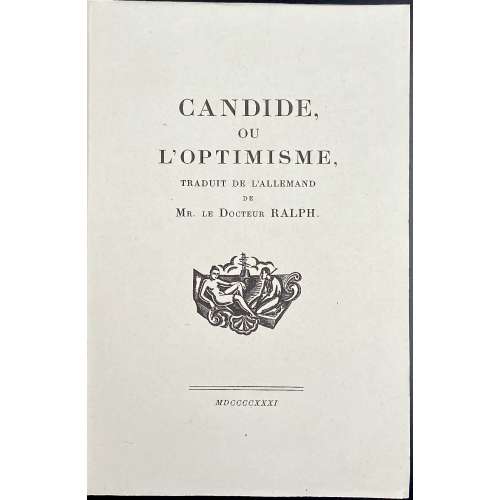 Softcover, 26 x 16.5 cm, publisher’s grey wrappers lettered in black, unbound, in a green double slipcase; collated in-4to, 24 leaves folded in four, pp.: [8] [1] 2-174 [10], total 192 pages, ils. Title-page: CANDIDE, | OU L’OPTIMISME, | TRADUIT DE L’ALLEMAND | DE | Mr. le Docteur RALPH. | {fleuron} | — | MDCCCCXXXI || Collation: π4 1-214 222 22*4 χ2, total 96 leaves, all on laid paper but χ (Avis au relieur) on Arches wove paper (watermarked) plus frontispiece and 12 engraved plates after Jean Roy. Limited edition of 300 copies — 5 on Chine, 10 on Japon, and the rest (275) on Arches, not for sale; of which this is copy № 3, numbered and signed by the artist ‘au crayon rouge’. Catalogue raisonné: Dutel 1137. Contributors: François-Marie Arouet [Voltaire] (French, 1694 – 1778) – author. Jean Roy – artist; attributed by most to Marcel North (British-Swiss, 1909 – 1990), and by J.P. Dutel to Edy Legrand (French, 1892 – 1970).
Softcover, 26 x 16.5 cm, publisher’s grey wrappers lettered in black, unbound, in a green double slipcase; collated in-4to, 24 leaves folded in four, pp.: [8] [1] 2-174 [10], total 192 pages, ils. Title-page: CANDIDE, | OU L’OPTIMISME, | TRADUIT DE L’ALLEMAND | DE | Mr. le Docteur RALPH. | {fleuron} | — | MDCCCCXXXI || Collation: π4 1-214 222 22*4 χ2, total 96 leaves, all on laid paper but χ (Avis au relieur) on Arches wove paper (watermarked) plus frontispiece and 12 engraved plates after Jean Roy. Limited edition of 300 copies — 5 on Chine, 10 on Japon, and the rest (275) on Arches, not for sale; of which this is copy № 3, numbered and signed by the artist ‘au crayon rouge’. Catalogue raisonné: Dutel 1137. Contributors: François-Marie Arouet [Voltaire] (French, 1694 – 1778) – author. Jean Roy – artist; attributed by most to Marcel North (British-Swiss, 1909 – 1990), and by J.P. Dutel to Edy Legrand (French, 1892 – 1970). -
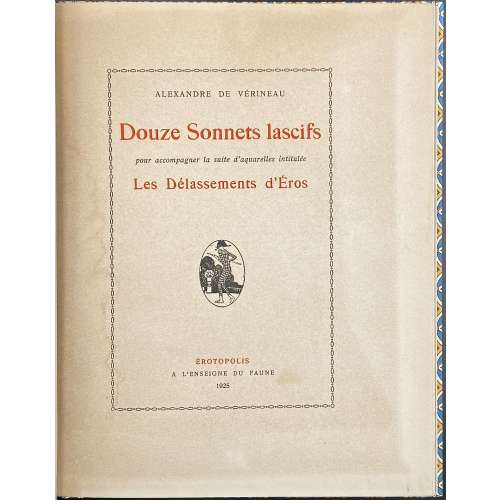 Volume bound by Boichot (signed on front pastedown), 25.3 x 20.2 cm in a 25.9 x 20.3 slipcase, the book and the case uniformly in beige, brown, and blue diaper paper with a navy blue label with gilt lettering to book's spine, top edge gilt, J.-P. Dutel’s bookplate to fep, portfolio cover preserved. Pp.: [1-4] 5-37 [38 blank]; collated 4to, 13 2-54; total 19 leaves (38 pages), plus 12 plates coloured in stencil technique (pochoir), produced after watercolours by Gerda Wegener in c. 1917 on Arches or Whatman laid paper, watermarked. Each illustration bears a small masquerade mask at the bottom as a signature. Text printed on laid paper without a watermark; starting from 2nd gathering, the text printed on recto only; minor traces of water stain to some pages. Title-page (red and black): ALEXANDRE DE VÉRINEAU | Douze Sonnets lascifs | pour accompagner la suite d’aquarelles intitulée | Les Délassements d’Éros | {vignette medallion} | ÉROTOPOLIS | A L’ENSEIGNE DU FAUNE | 1925 || First edition, first printing (incl. plates); clandestine. Catalogue raisonné: Dutel 1356, 1434; Pia 363/4; Noedmann I 310; Fekete 221. Contributors: Louis Perceau (French, 1883 – 1942) – author (see LIB-2633.2021: Guillaume Apollinaire, Fernand Fleuret, Louis Perceau. L'enfer de la Bibliothèque Nationale. — Paris: Mercure de France, 1913). Gerda Wegener (Danish, 1886 – 1940) – artist. Maurice Duflou (French, 1885 – 1951) – publisher. Boichot – bookbinder.
Volume bound by Boichot (signed on front pastedown), 25.3 x 20.2 cm in a 25.9 x 20.3 slipcase, the book and the case uniformly in beige, brown, and blue diaper paper with a navy blue label with gilt lettering to book's spine, top edge gilt, J.-P. Dutel’s bookplate to fep, portfolio cover preserved. Pp.: [1-4] 5-37 [38 blank]; collated 4to, 13 2-54; total 19 leaves (38 pages), plus 12 plates coloured in stencil technique (pochoir), produced after watercolours by Gerda Wegener in c. 1917 on Arches or Whatman laid paper, watermarked. Each illustration bears a small masquerade mask at the bottom as a signature. Text printed on laid paper without a watermark; starting from 2nd gathering, the text printed on recto only; minor traces of water stain to some pages. Title-page (red and black): ALEXANDRE DE VÉRINEAU | Douze Sonnets lascifs | pour accompagner la suite d’aquarelles intitulée | Les Délassements d’Éros | {vignette medallion} | ÉROTOPOLIS | A L’ENSEIGNE DU FAUNE | 1925 || First edition, first printing (incl. plates); clandestine. Catalogue raisonné: Dutel 1356, 1434; Pia 363/4; Noedmann I 310; Fekete 221. Contributors: Louis Perceau (French, 1883 – 1942) – author (see LIB-2633.2021: Guillaume Apollinaire, Fernand Fleuret, Louis Perceau. L'enfer de la Bibliothèque Nationale. — Paris: Mercure de France, 1913). Gerda Wegener (Danish, 1886 – 1940) – artist. Maurice Duflou (French, 1885 – 1951) – publisher. Boichot – bookbinder. -
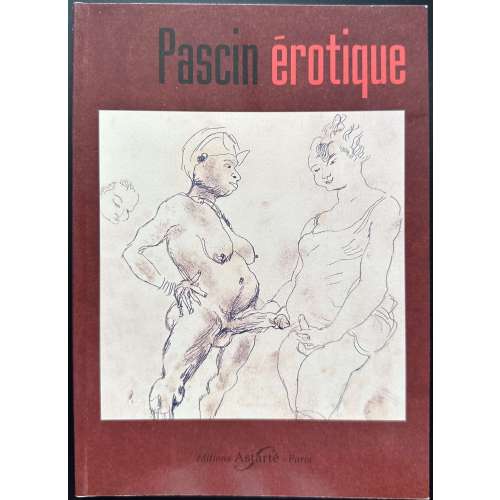 Catalogue raisonné of Pascin's erotic drawings. Softcover, 21 x 15 cm, burgundy gloss pictorial paperback with lettering and vignettes, pp.: [1-3] 4-102 [2], illustrated throughout. Limited edition of 1,000 copies. Title-page: Pascin érotique | {round vignette} | éditions Astarté - Paris || Contributors: Alexandre Dupouy (French) Pascin, Jules [Pincas, Julius Mordecai] (French-Jewish, 1885 – 1930)
Catalogue raisonné of Pascin's erotic drawings. Softcover, 21 x 15 cm, burgundy gloss pictorial paperback with lettering and vignettes, pp.: [1-3] 4-102 [2], illustrated throughout. Limited edition of 1,000 copies. Title-page: Pascin érotique | {round vignette} | éditions Astarté - Paris || Contributors: Alexandre Dupouy (French) Pascin, Jules [Pincas, Julius Mordecai] (French-Jewish, 1885 – 1930) -
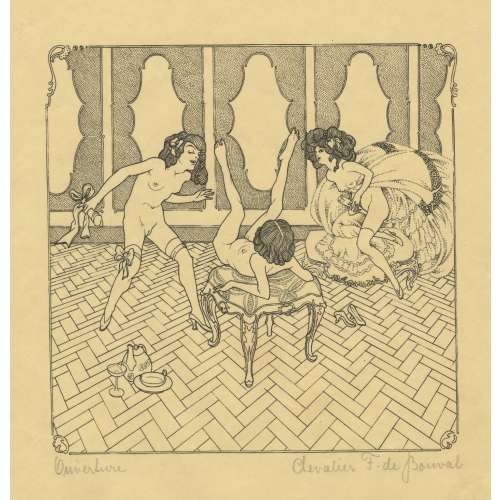 A set of sixteen planographic prints, signed and titled in pencil by owner “Chevalier F. de Bouval” (pseudonym of Franz von Bayros (Austrian, 1866 – 1924). Titles include: 1) Ouverture, 2) champagne brut, 3) maternité, 4) piano, 5) crudité délicieuse, 6. la belle vue, 7) au pensionnat, 8) le collier, 9) languelles pénètrelles, 10) introduction, 11) le sourrogat, 12) variation amoureuse, 13) la surprise, 14) le clef délicat, 15) le monstre gomme, 16) fruits de sud. Printed on wove paper, possibly engraved on wood after ink drawings by Franz von Bayros (Austrian, 1866 – 1924) under the pseudonym Chevalier F. de Bouval. Size: sheet 30 x 24 cm, image 18 x 17.5 cm. In another source, there are two more images from the same set: le passe-partout and la doublette, making 18 images altogether; the set is titled “Lesbia: XVIII sujets”, signed by Chevalier François René de Bouval.
A set of sixteen planographic prints, signed and titled in pencil by owner “Chevalier F. de Bouval” (pseudonym of Franz von Bayros (Austrian, 1866 – 1924). Titles include: 1) Ouverture, 2) champagne brut, 3) maternité, 4) piano, 5) crudité délicieuse, 6. la belle vue, 7) au pensionnat, 8) le collier, 9) languelles pénètrelles, 10) introduction, 11) le sourrogat, 12) variation amoureuse, 13) la surprise, 14) le clef délicat, 15) le monstre gomme, 16) fruits de sud. Printed on wove paper, possibly engraved on wood after ink drawings by Franz von Bayros (Austrian, 1866 – 1924) under the pseudonym Chevalier F. de Bouval. Size: sheet 30 x 24 cm, image 18 x 17.5 cm. In another source, there are two more images from the same set: le passe-partout and la doublette, making 18 images altogether; the set is titled “Lesbia: XVIII sujets”, signed by Chevalier François René de Bouval. -
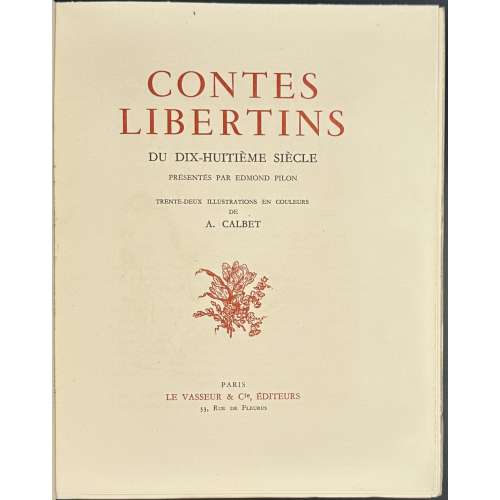 Softcover, cream French flapped wrappers, 242 x 192 mm, glassine dust jacket, lower and outer margins untrimmed, red lettering to front wrapper CONTES LIBERTINS | DU | DIX-HUITIÈME SIÈCLE; in a double slipcase; 10 full-page colour intaglio prints, incl. frontispiece, and 10 half-page coloured prints after Antoine Calbet; pp.: [1-8] 9-223 [224] [6], total 115 leaves plus ten plates with tissue guards extraneous to collation. Copy enhanced with a full suite of 32 uncoloured intaglio prints, and 12 refused plates:
Softcover, cream French flapped wrappers, 242 x 192 mm, glassine dust jacket, lower and outer margins untrimmed, red lettering to front wrapper CONTES LIBERTINS | DU | DIX-HUITIÈME SIÈCLE; in a double slipcase; 10 full-page colour intaglio prints, incl. frontispiece, and 10 half-page coloured prints after Antoine Calbet; pp.: [1-8] 9-223 [224] [6], total 115 leaves plus ten plates with tissue guards extraneous to collation. Copy enhanced with a full suite of 32 uncoloured intaglio prints, and 12 refused plates: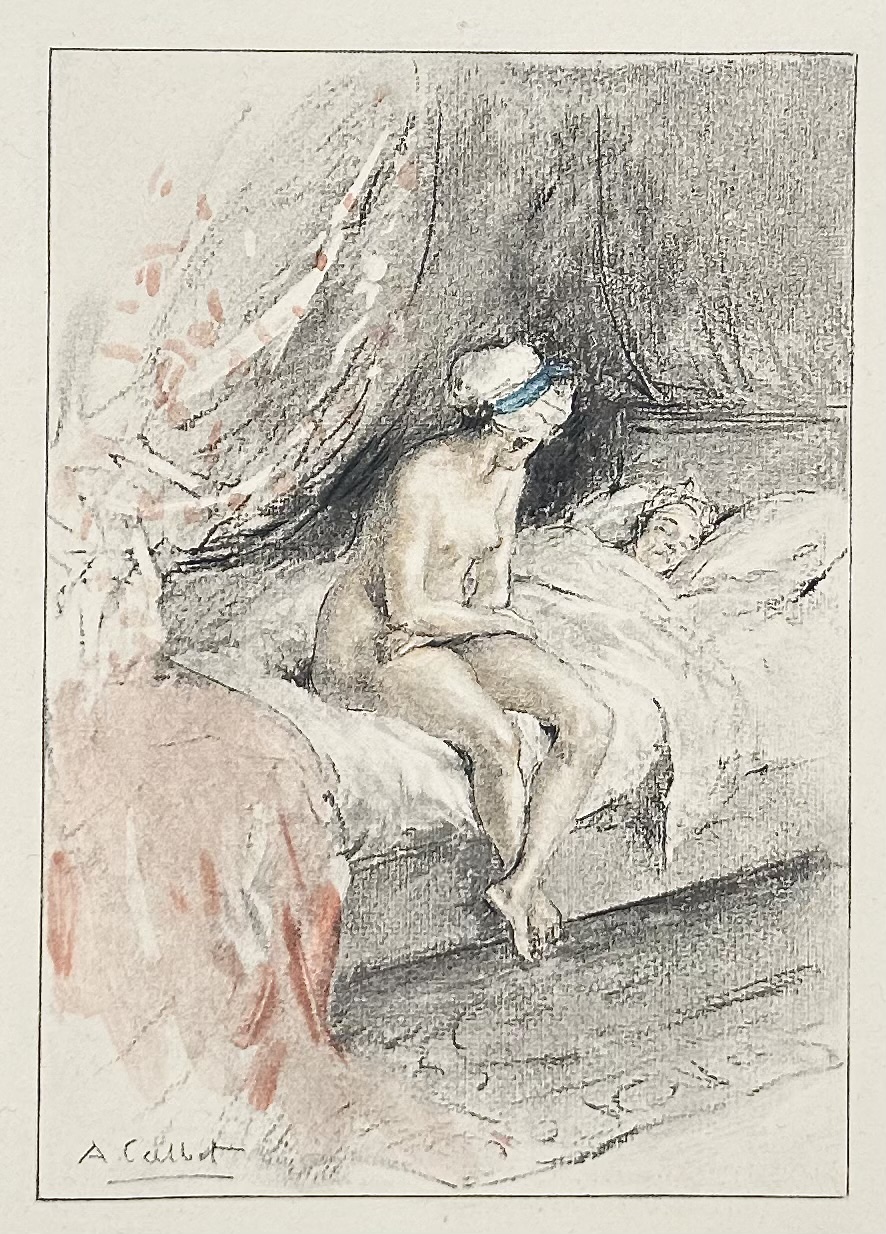
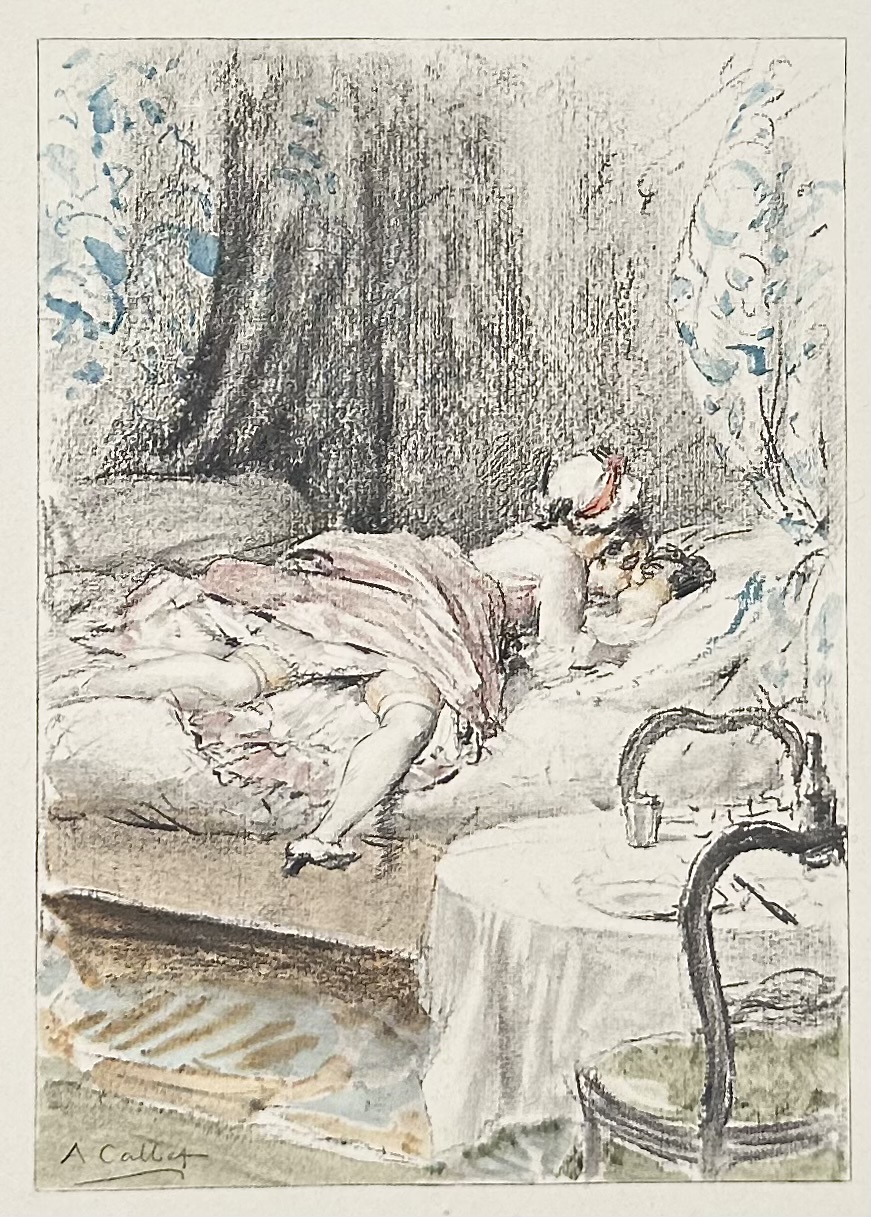
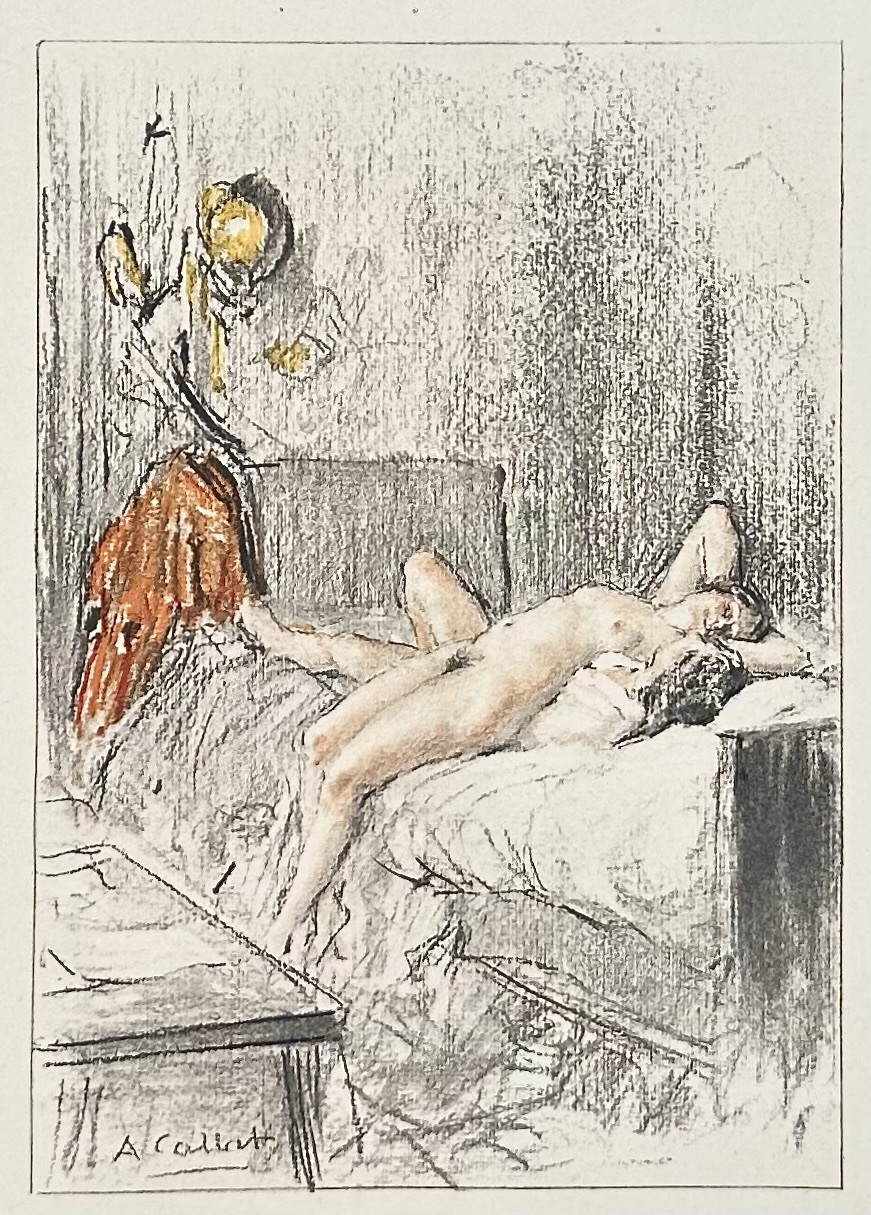
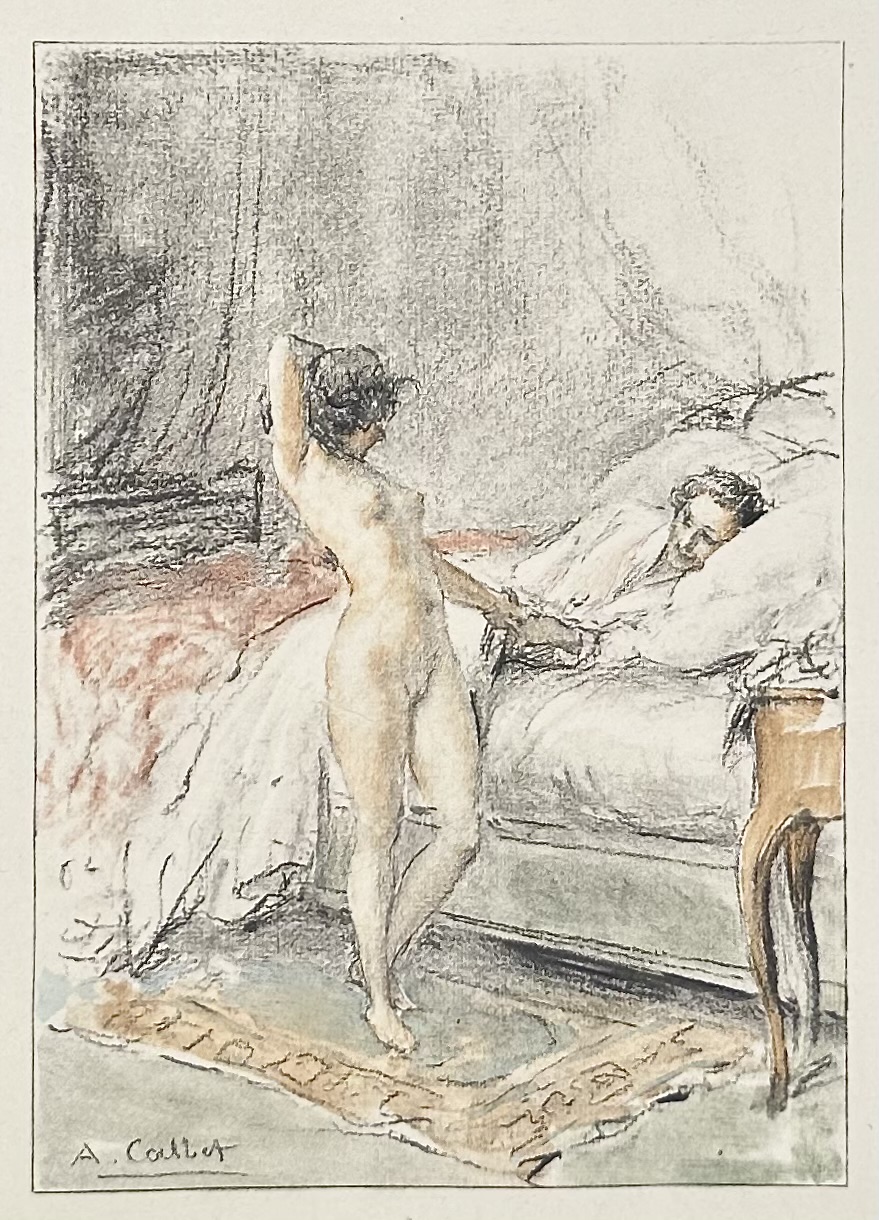
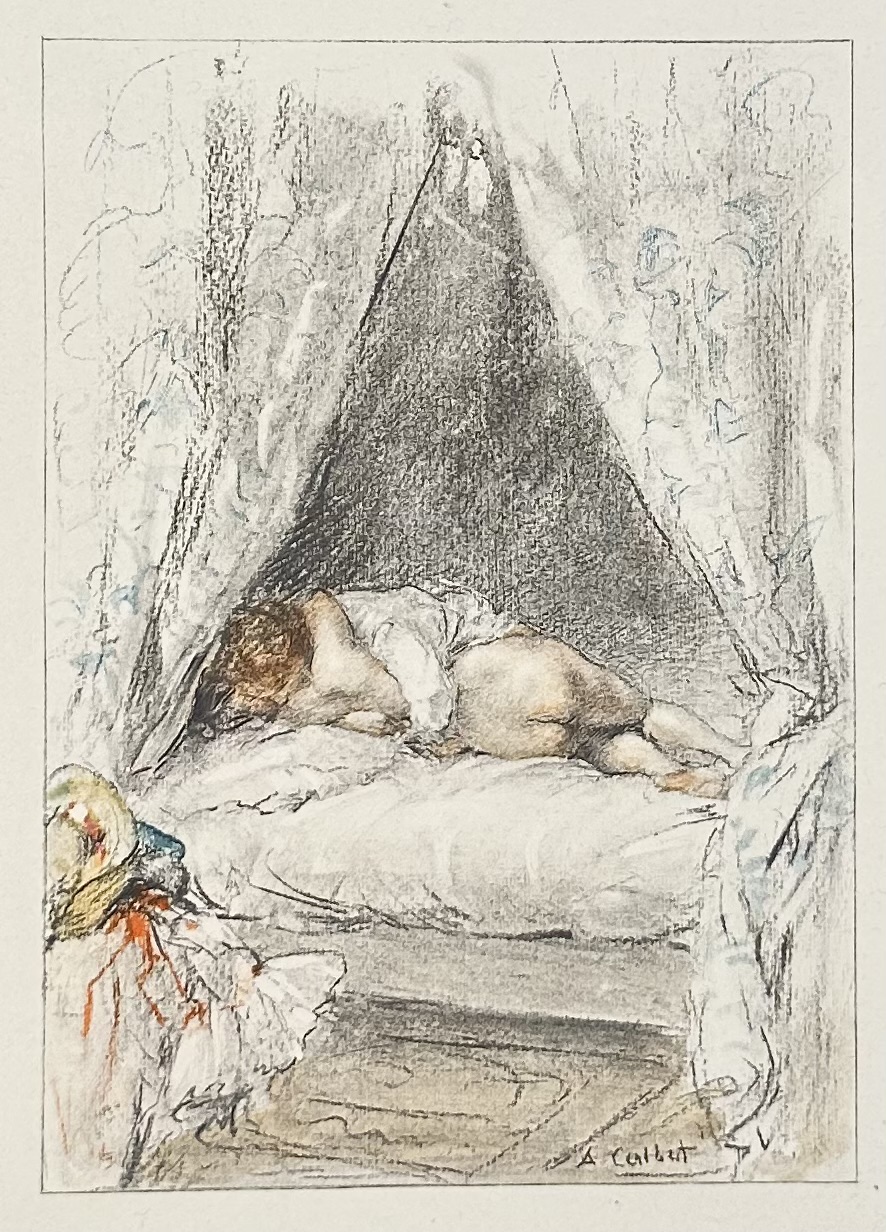
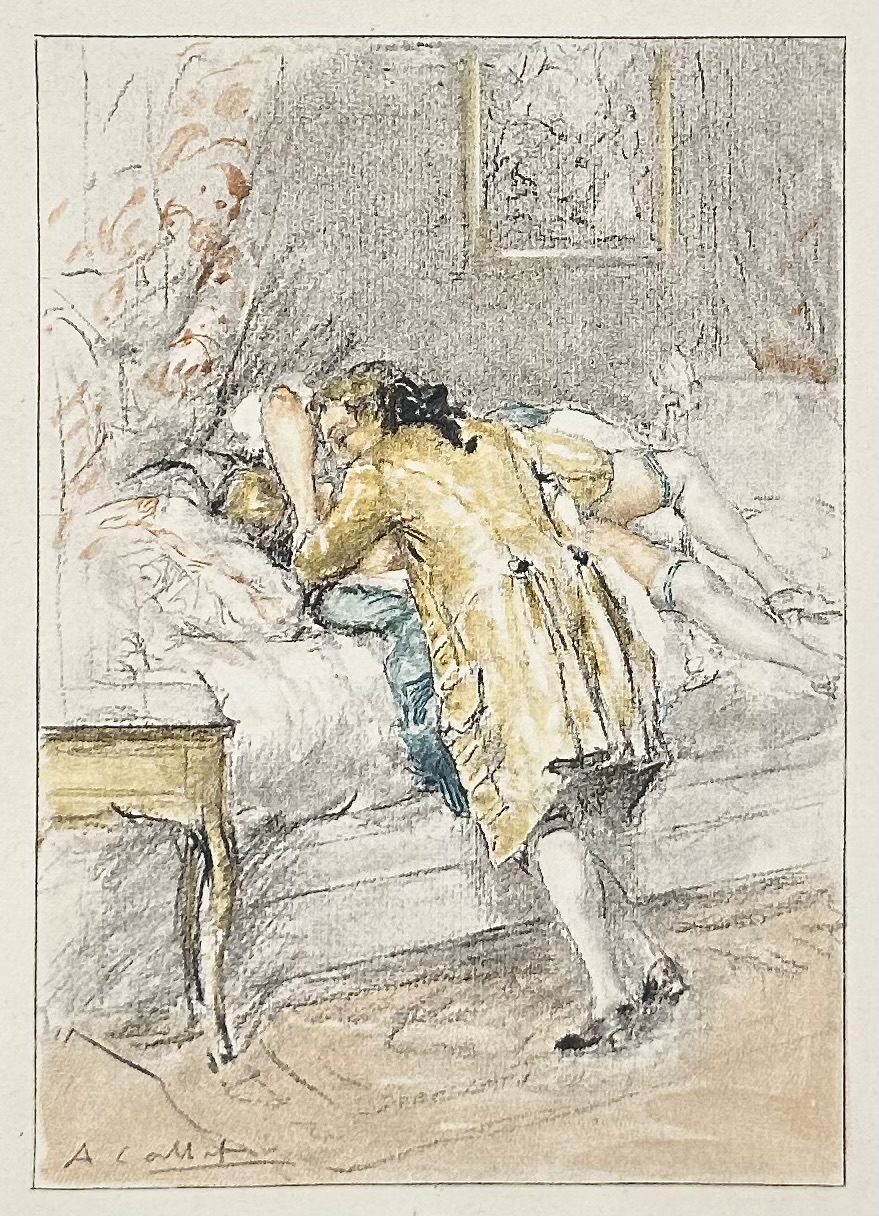
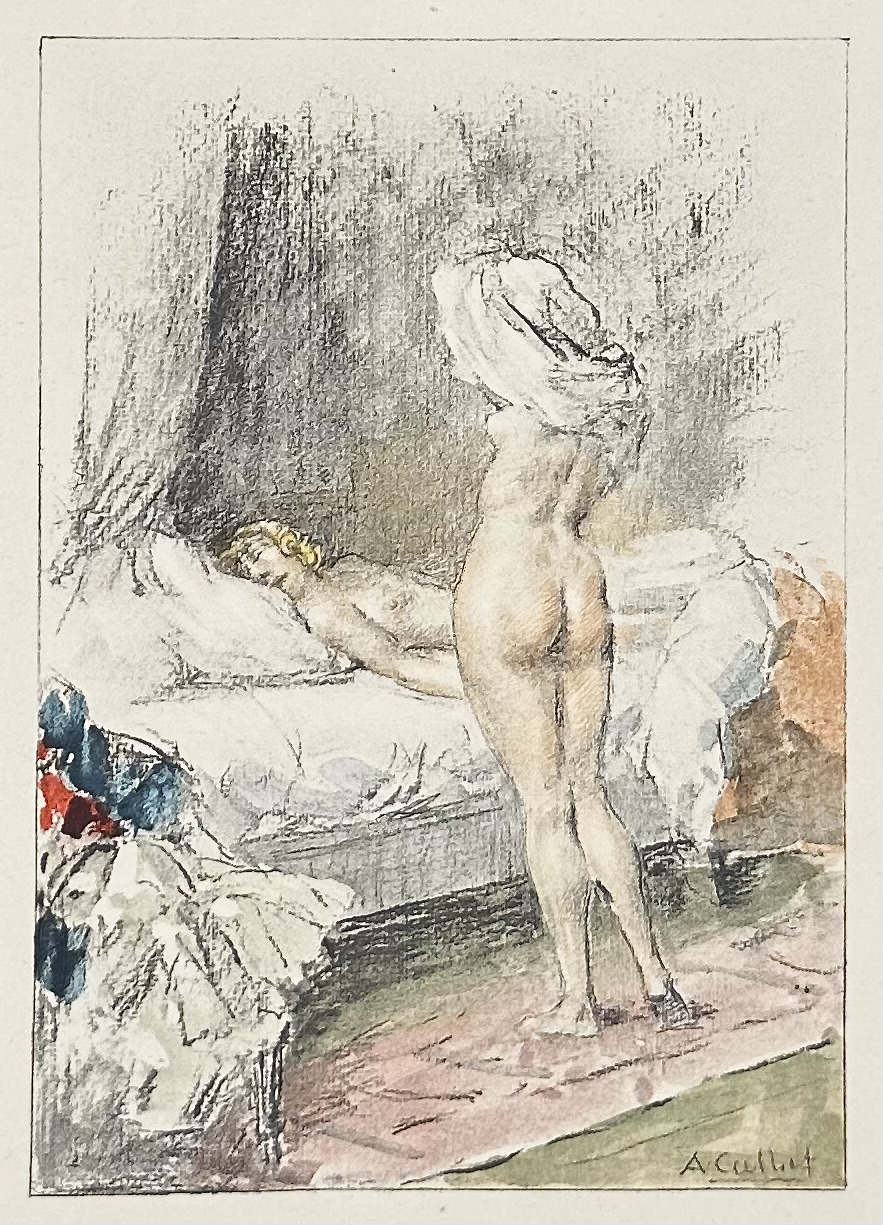
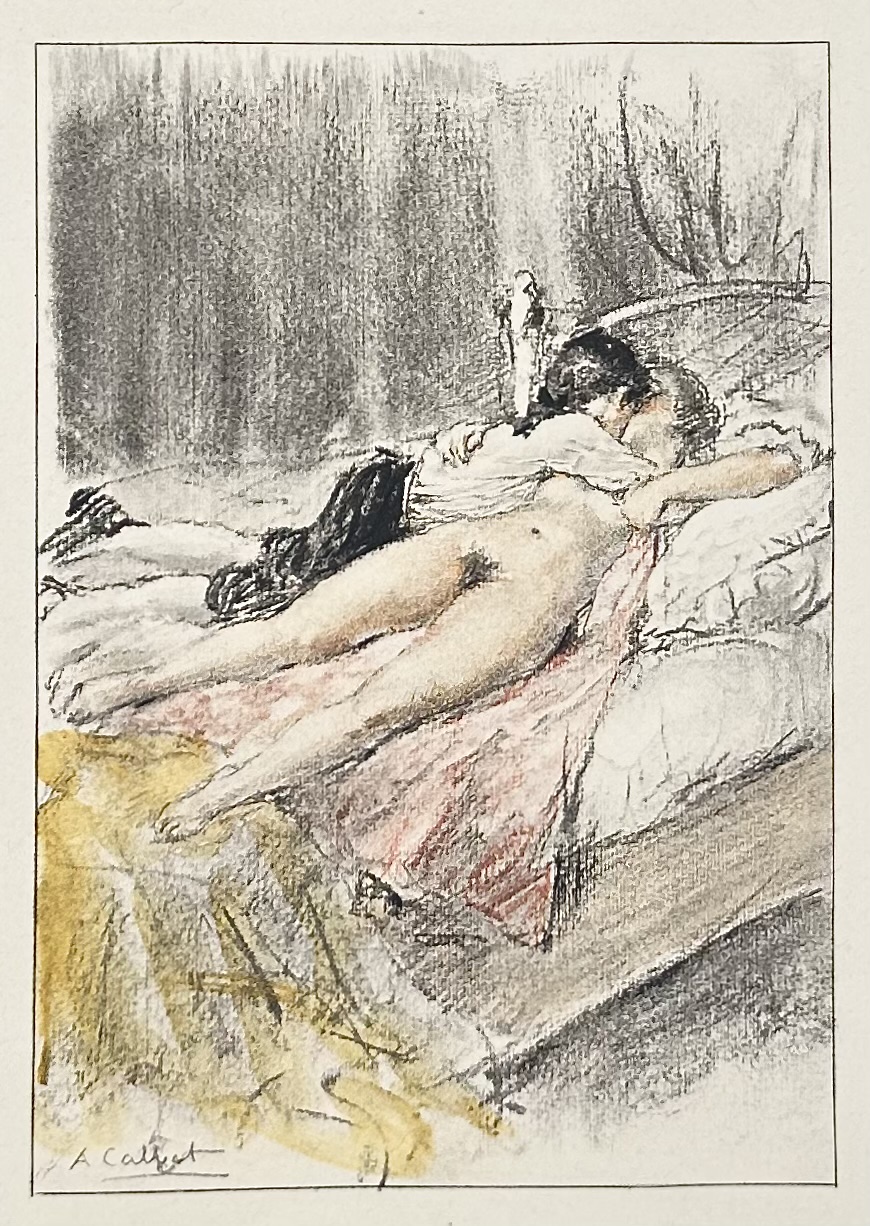
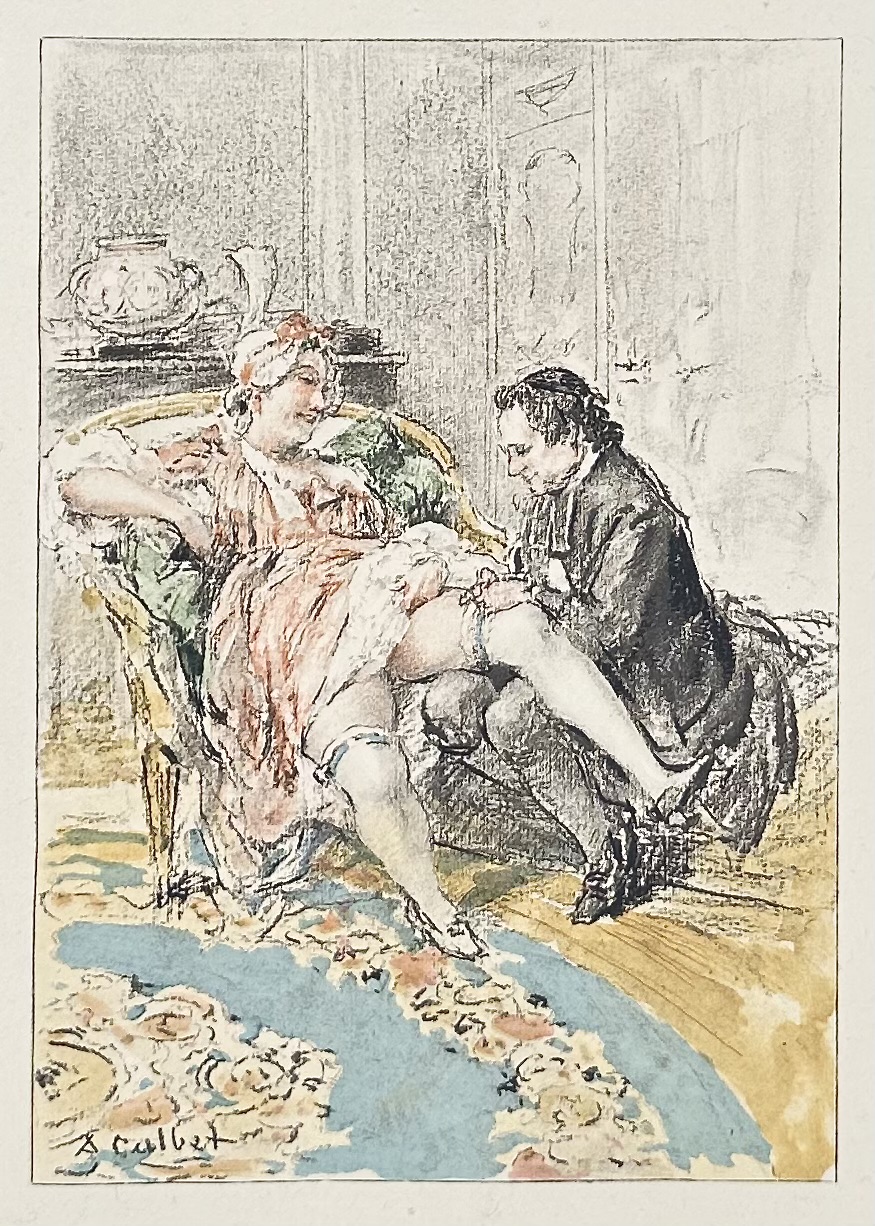
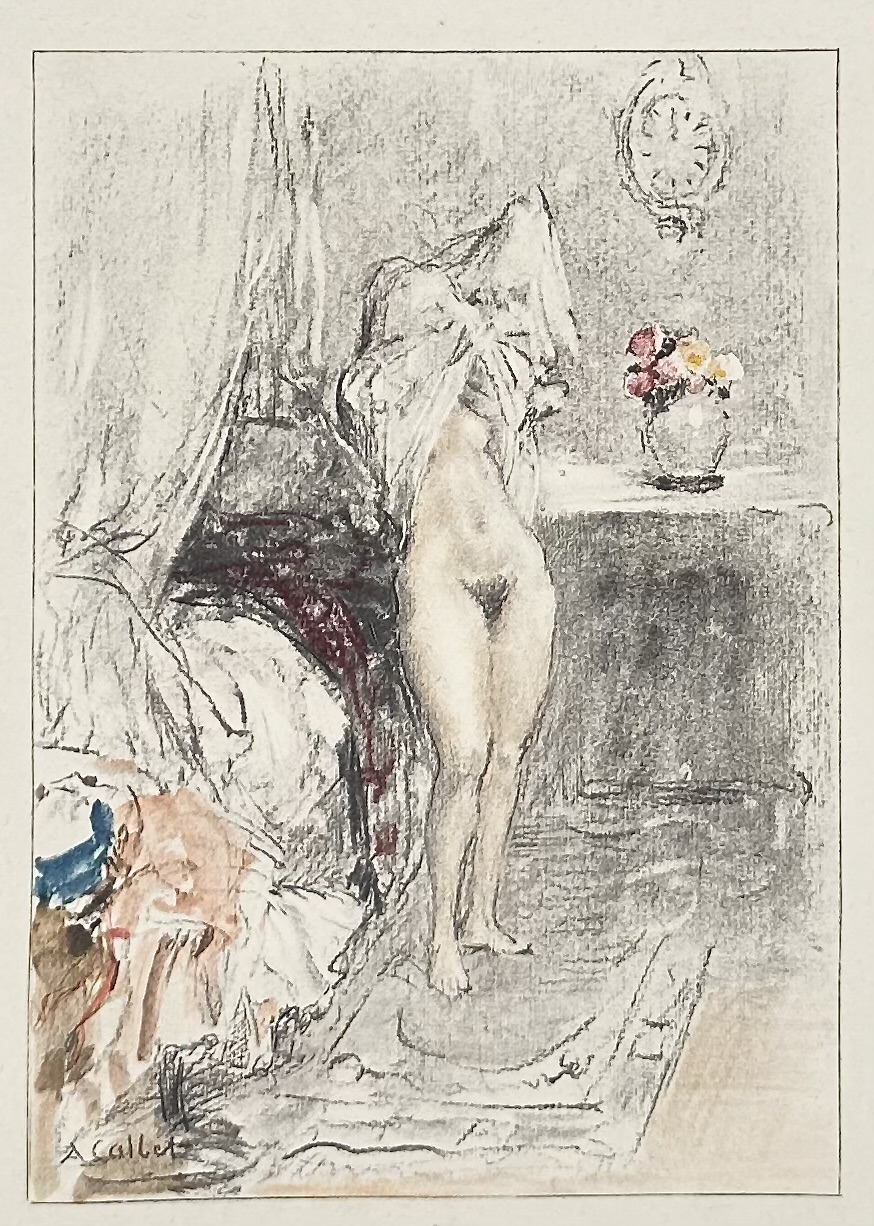
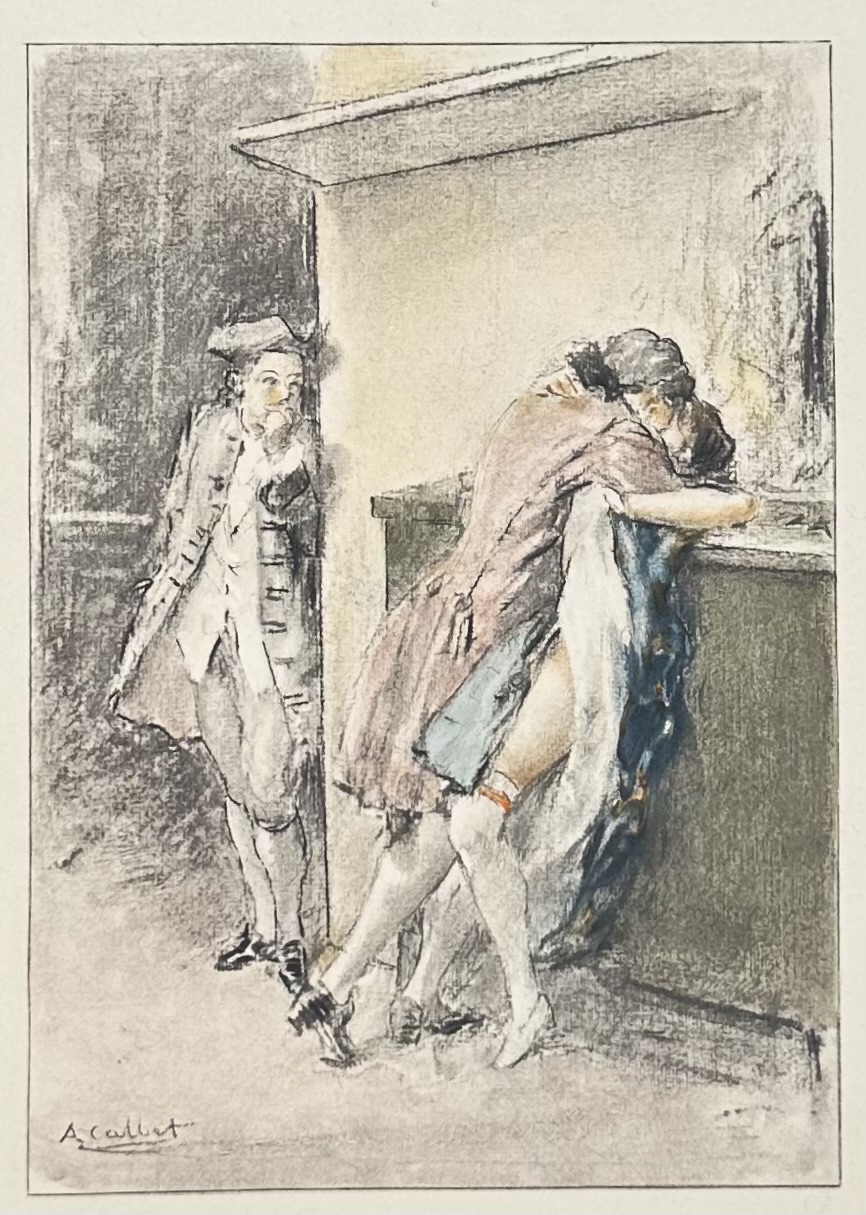
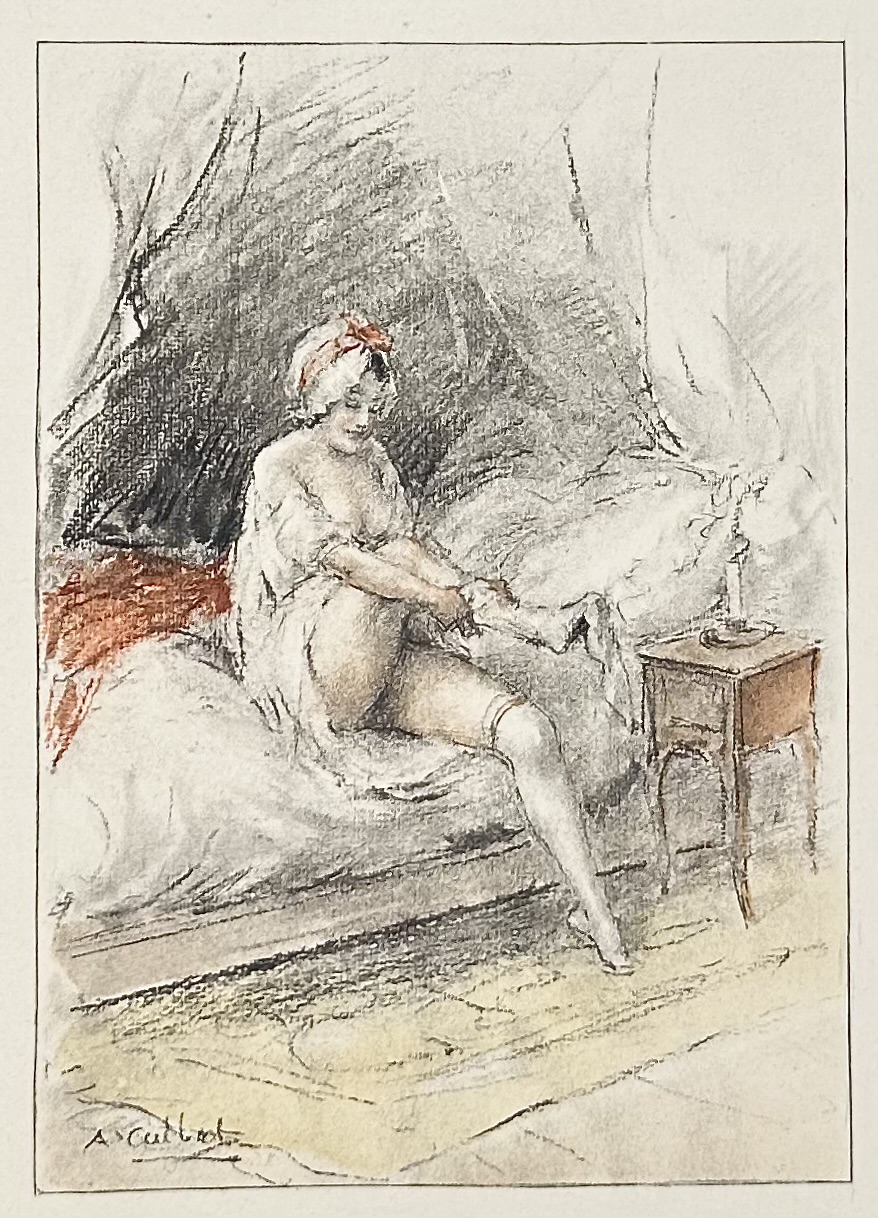 Title-page (red and black): CONTES LIBERTINS | DU DIX-HUITIÈME SIÈCLE | PRÉSENTÉS PAR EDMOND PILON | TRENTE-DEUX ILLUSTRATIONS EN COULEURS | DE | A. CALBET | {fleuron} | PARIS | LE VASSEUR & Cie, ÉDITEURS | 33, Rue de Fleurus ||
Limitation: 587 copies, of which 32 on Japon Impérial (№№ 1-32), 65 on Hollande Van Gilder (№№ 33-97), 490 on Velin a la forme de Rives (№№ 98-587). 25 copies were printed on top of this print run for collaborators, numbered in Roman letters. This copy is № 77 on watermarked Van Gilder Zonnen paper.
Colophon: LE TEXTE DE CET OUVRAGE A | ÉTÉ IMPRIMÉ SUR LES PRESSES | DE CL. JACOUB ET Cie. | LES ILLUSTRATIONS, GRAVÉES PAR L. MACCARD, ONT ÉTÉ | TIRÉES EN TAILLE-DOUCE | PAR A. PORCABEUF ET Cie. | ACHEVÉ D'IMPRIMER, A | PARIS, LE 12 OCTOBRE 1936.
Table of contents:
Histoire de madame Allain – Notice sur le comte de Caylus.
Histoire de Cidal Acmet – Notice sur l'abbé Prevost
Aline, reine de Golconde – Notice sur le chevalier de Boufflers
Cosi-Sancta – notice sur Voltaire.
Cécile, Marine et Bellino – Notice sur Casanova de Seingalt
Histoire de Babet – Notice sur l'abbé Du Laurens
Histoire de Fanny Hill – Notice sur John Cleland.
Louise et Thérèse – Notice sur Rétif de La Bretonne
Contributors:
Pilon, Edmond (French, 1874 – 1945) – compiler
Le Vasseur & Cie – publisher
Calbet, Antoine (French, 1860 – 1942) – artist
Cl. Jacoub et Cie – printer/text
Maccard, Louis (French) – engraver
Porcabeuf, Alfred (French, 1867 – 1952) – printer/plates
Authors:
Caylus, Anne Claude de [comte de Caylus] (French, 1692 – 1765)
Prévost d'Exiles, Antoine François [Abbé Prévost] (French, 1697 – 1763)
Boufflers, Stanislas Jean, chevalier de (French, 1738 – 1815)
Voltaire, François Marie Arouet de (French, 1694 – 1778)
Casanova, Giacomo Girolamo (Italian, 1725 – 1798)
Laurent, Henri-Joseph [Abbé Du Laurens] (French, 1719 – 1793)
Cleland, John (British, c. 1709 – 1789)
Restif [Retif] de la Bretonne, Nicolas Edmé (French, 1734 – 1806)
Title-page (red and black): CONTES LIBERTINS | DU DIX-HUITIÈME SIÈCLE | PRÉSENTÉS PAR EDMOND PILON | TRENTE-DEUX ILLUSTRATIONS EN COULEURS | DE | A. CALBET | {fleuron} | PARIS | LE VASSEUR & Cie, ÉDITEURS | 33, Rue de Fleurus ||
Limitation: 587 copies, of which 32 on Japon Impérial (№№ 1-32), 65 on Hollande Van Gilder (№№ 33-97), 490 on Velin a la forme de Rives (№№ 98-587). 25 copies were printed on top of this print run for collaborators, numbered in Roman letters. This copy is № 77 on watermarked Van Gilder Zonnen paper.
Colophon: LE TEXTE DE CET OUVRAGE A | ÉTÉ IMPRIMÉ SUR LES PRESSES | DE CL. JACOUB ET Cie. | LES ILLUSTRATIONS, GRAVÉES PAR L. MACCARD, ONT ÉTÉ | TIRÉES EN TAILLE-DOUCE | PAR A. PORCABEUF ET Cie. | ACHEVÉ D'IMPRIMER, A | PARIS, LE 12 OCTOBRE 1936.
Table of contents:
Histoire de madame Allain – Notice sur le comte de Caylus.
Histoire de Cidal Acmet – Notice sur l'abbé Prevost
Aline, reine de Golconde – Notice sur le chevalier de Boufflers
Cosi-Sancta – notice sur Voltaire.
Cécile, Marine et Bellino – Notice sur Casanova de Seingalt
Histoire de Babet – Notice sur l'abbé Du Laurens
Histoire de Fanny Hill – Notice sur John Cleland.
Louise et Thérèse – Notice sur Rétif de La Bretonne
Contributors:
Pilon, Edmond (French, 1874 – 1945) – compiler
Le Vasseur & Cie – publisher
Calbet, Antoine (French, 1860 – 1942) – artist
Cl. Jacoub et Cie – printer/text
Maccard, Louis (French) – engraver
Porcabeuf, Alfred (French, 1867 – 1952) – printer/plates
Authors:
Caylus, Anne Claude de [comte de Caylus] (French, 1692 – 1765)
Prévost d'Exiles, Antoine François [Abbé Prévost] (French, 1697 – 1763)
Boufflers, Stanislas Jean, chevalier de (French, 1738 – 1815)
Voltaire, François Marie Arouet de (French, 1694 – 1778)
Casanova, Giacomo Girolamo (Italian, 1725 – 1798)
Laurent, Henri-Joseph [Abbé Du Laurens] (French, 1719 – 1793)
Cleland, John (British, c. 1709 – 1789)
Restif [Retif] de la Bretonne, Nicolas Edmé (French, 1734 – 1806) -
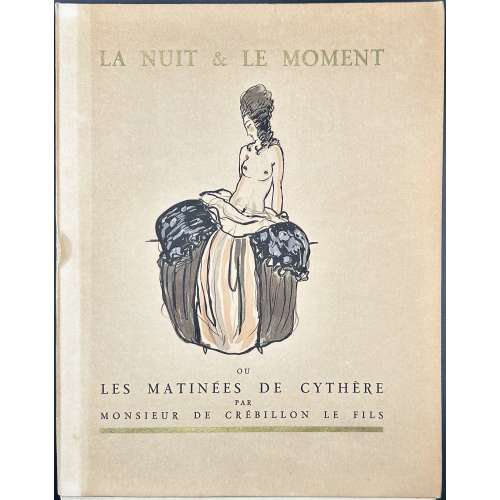 Softcover volume, 33 x 26 cm, collated in folio, not bound, in publisher’s French flapped pictorial wrappers, lettering to spine; printed on thick wove Arches paper watermarked “MBM”, upper edge trimmed, owner’s blind stamp to h.t. “Ex Libris Comte Tony de Vibraye”, glassine dust jacket, in a slipcase. Collation: π2 1-262, total 54 leaves, plus 4 leaves in wrappers, plus 10 plates, incl. frontispiece; coloured aquatints after Sylvain Sauvage; coloured etched vignette to front wrapper, gilt woodcut to back wrapper, woodcut title-page and woodcut headpiece after the same. Pp.: [4] [1] 2-102 [2]. Front wrapper (gilt and black): LA NUIT & LE MOMENT | {vignette} | OU | LES MATINÉES DE CYTHÈRE | PAR | MONSIEUR DE CRÉBILLON LE FILS | — || Title-page (woodcut): CRÉBILLON LE FILS | — | LA NUIT ET LE MOMENT | OU | LES MATINÉES | DE CYTHÈRE | {vignette} | A PARIS | AUX DEPENS D'UN AMATEUR | — | M CM XXIV || Limitation: De cette édition il a été tiré un exemplaire unique sur japon impérial comportant dix aquarelles originales, deux cents trente exemplaires sur vélin d' Arches numérotés 1 à 230, dont les dix premiers avec une suite de hors texte sur japon. N° 1 [Print run limited to 230 copies on Arches plus a unique copy on Japon with original watercolours, this is copy № 1 on wove paper]. Seller’s description: La Nuit et le moment ou Les Matinées de Cythère. Paris, Au dépens d'un amateur, 1924. In-4, en feuilles, non rogné, couverture illustrée et étui. Ouvrage illustré de 4 gravures sur bois et de 10 eaux-fortes libres en couleurs hors texte de Sylvain Sauvage. Tirage à 231 exemplaires, celui-ci le n°1 sur vélin d'Arches. Manque la suite de hors texte sur japon. De la bibliothèque du Comte Tony de Vibraye, avec cachet à froid. Dutel, n°2062. Catalogue raisonné: honesterotica.com; Dutel III 2062. Contributors: Claude-Prosper Jolyot de Crébillon [Crébillon fils] (French, 1707 – 1777) – author. Sylvain Sauvage [Félix Roy] (French, 1888 – 1948) – artist. Provenance: Antoine Henri Gaston Hurault de Vibraye [Comte Tony de Vibraye] (French, 1893 – 1951)
Softcover volume, 33 x 26 cm, collated in folio, not bound, in publisher’s French flapped pictorial wrappers, lettering to spine; printed on thick wove Arches paper watermarked “MBM”, upper edge trimmed, owner’s blind stamp to h.t. “Ex Libris Comte Tony de Vibraye”, glassine dust jacket, in a slipcase. Collation: π2 1-262, total 54 leaves, plus 4 leaves in wrappers, plus 10 plates, incl. frontispiece; coloured aquatints after Sylvain Sauvage; coloured etched vignette to front wrapper, gilt woodcut to back wrapper, woodcut title-page and woodcut headpiece after the same. Pp.: [4] [1] 2-102 [2]. Front wrapper (gilt and black): LA NUIT & LE MOMENT | {vignette} | OU | LES MATINÉES DE CYTHÈRE | PAR | MONSIEUR DE CRÉBILLON LE FILS | — || Title-page (woodcut): CRÉBILLON LE FILS | — | LA NUIT ET LE MOMENT | OU | LES MATINÉES | DE CYTHÈRE | {vignette} | A PARIS | AUX DEPENS D'UN AMATEUR | — | M CM XXIV || Limitation: De cette édition il a été tiré un exemplaire unique sur japon impérial comportant dix aquarelles originales, deux cents trente exemplaires sur vélin d' Arches numérotés 1 à 230, dont les dix premiers avec une suite de hors texte sur japon. N° 1 [Print run limited to 230 copies on Arches plus a unique copy on Japon with original watercolours, this is copy № 1 on wove paper]. Seller’s description: La Nuit et le moment ou Les Matinées de Cythère. Paris, Au dépens d'un amateur, 1924. In-4, en feuilles, non rogné, couverture illustrée et étui. Ouvrage illustré de 4 gravures sur bois et de 10 eaux-fortes libres en couleurs hors texte de Sylvain Sauvage. Tirage à 231 exemplaires, celui-ci le n°1 sur vélin d'Arches. Manque la suite de hors texte sur japon. De la bibliothèque du Comte Tony de Vibraye, avec cachet à froid. Dutel, n°2062. Catalogue raisonné: honesterotica.com; Dutel III 2062. Contributors: Claude-Prosper Jolyot de Crébillon [Crébillon fils] (French, 1707 – 1777) – author. Sylvain Sauvage [Félix Roy] (French, 1888 – 1948) – artist. Provenance: Antoine Henri Gaston Hurault de Vibraye [Comte Tony de Vibraye] (French, 1893 – 1951) -
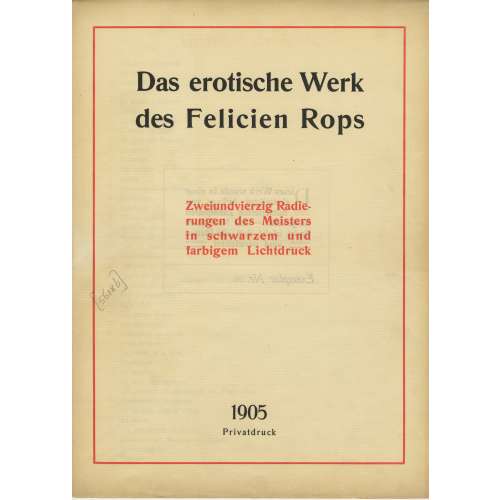
A limited-edition (№26/500) set of 42 etchings and drypoints after Félicien Rops (Belgian, 1833 – 1898), each mounted in a numbered passe-partout, printed posthumously by an anonym in Germany in 1905; in a flapped half faux suede-backed cardboard portfolio with straps, 442 x 335 mm, red embossed lettering to the front cover, bookplate of Richard Teschner (Austrian, 1879 – 1948) pasted inside.
Title-page (in a red frame): Das erotische Werk | des Felicien Rops | Zweiundvierzig Radie- | rungen des Meisters | in schwarzem und | farbigem Lichtdruck | 1905 | Privatdruk ||
Limitation (in a red two-section frame) : Dieses Werk wurde in einer | einmaligen Auflage von | 500 numerierten Exemplaren | hergestellt. — Ein Nachdruck | findet nicht statt, die Platten | == sind vernichtet == | Exemplar Nr. 26 ||
Verzeichnis der Tafeln (Table of Contents): 1. Initiation sentimentale; 2. La croix; 3. Entre-acte; 4. Holocauste; 5. La bonne hollandaise; 6. Étude; 7. La femme au pantin; 8. L’amour de Satan; 9. Au pays des féminies; 10. La volupté; 11. Evocation; 12. De castitate; 13. Joujou; 14. Vengeance d’une femme; 15. Phantasies; 16. Indolence; 17. Théâtre gaillard; 18. Appel au peuple; 19. Masques modernes; 20. Tout est grand chez les rois; 21. Marie-Madeleine; 22. L’amante du Christ; 23. Feuille de vigne; 24. La messe de Guide; 25 Viol et prostitution; 26. Le maillot; 27. Les jeunes France; 28. Les diaboliques; 29. Coquetterie au miroir; 30. Jeune homme; 31. La femme et la mort; 32. Confidence; 33. La bergère; 34. La mère aux satyrions; 35. Les exercices de dévotion de Mr. Henri Roch; 36. Mademoiselle de Maupin; 37. Le bonheur dans le crime; 38. La sirène; 39. Les cabotinages de l’amour; 40. Document sur l’impuissance d’aimer; 41. A cœur perdu; 42. Curieuse.
-
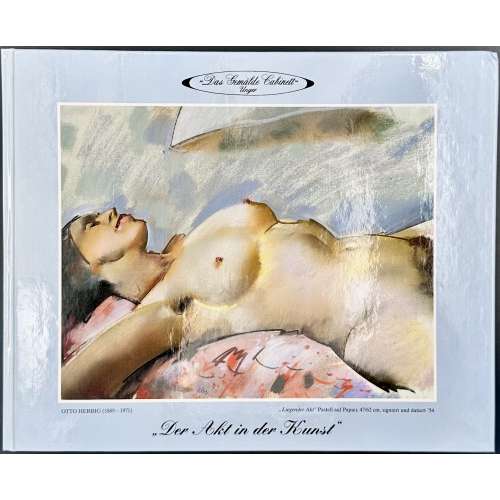 NEWTwo-volume edition, uniform pictorial glossy oblong 215 x 263 mm hardcover, catalogue of the sales exhibition from May 25 to July 17, 1993, held at the former rooms of the Galerie Wimmer & Co. in Munich. Vol. 1: The Nude in Art: From Romanticism to the Present; pp.: [2] 3-109, 86 colour plates and 16 b/w illustrations. Artists represented: Otto Müller, Paul Paede, Max Liebermann, Rudolf Nissl, Hans Licht, Leopold Schmutzler, Julius Schlegel, Paul Peel, Karl Truppe, Otto Herbig, Mozart Rottmann, Karl Schlageter, Wilhelm Hempfing, Jean Gabriel Domergue, Franz von Stuck, Marcel Herrfeldt, Jörg Trübner (Sohn des Wilhelm), Julius Hüther, Ludwig Bock, Ernst Fuchs, etc. Title-page: “Der Akt in der Kunst” | Von der Romantik bis zur Gegenwart | Gemälde, Aquarelle, Pastelle, Zeichnungen, Bronzen, Graphiken | — | Verkaufsausstellung vom 25. Mai bis 17. Juli 1993 | ~ | DAS GEMÄLDE CABINETT UNGER | in den ehemaligen Räumen der Galerie Wimmer & Co. seit 1825 | 8000 München 2, Brienner Straße 7, Telefon (089) 22 75 15 u. 29 84 04 | Montag - Freitag 10 - 18 Uhr, Samstag 10 - 14 Uhr, langer Samstag 10 - 16 Uhr || Vol. 2: Eroticism in Art: From Eroticism to Perversion; pp.: [2] 3-100, 93 colour plates and 29 b/w illustrations. Artists represented: Otto Rudolf Schatz (28 watercolours), Fried Pal, Alois Harbeck, Jean Gabriel Domergue, Max Brüning, Max Schwimmer, Alfons Walde, Karl Heidelbach, Josef Werner Leben, etc. Two aquatints by Emil Sartori (Ranzenhofer) marked as Emil Sartou, and two others of him as Erotischer Meister des 19. Jahrhunderts; two aquatints by Frans von Bayros marked as Unbekannter Meister des 19. Jahrhunderts. Title-page: Erotik in der Kunst | “Von der Erotik bis zur Perversion” | Gemälde, Aquarelle, Pastelle, | Zeichnungen, Bronzen, Graphiken | (ibid).
NEWTwo-volume edition, uniform pictorial glossy oblong 215 x 263 mm hardcover, catalogue of the sales exhibition from May 25 to July 17, 1993, held at the former rooms of the Galerie Wimmer & Co. in Munich. Vol. 1: The Nude in Art: From Romanticism to the Present; pp.: [2] 3-109, 86 colour plates and 16 b/w illustrations. Artists represented: Otto Müller, Paul Paede, Max Liebermann, Rudolf Nissl, Hans Licht, Leopold Schmutzler, Julius Schlegel, Paul Peel, Karl Truppe, Otto Herbig, Mozart Rottmann, Karl Schlageter, Wilhelm Hempfing, Jean Gabriel Domergue, Franz von Stuck, Marcel Herrfeldt, Jörg Trübner (Sohn des Wilhelm), Julius Hüther, Ludwig Bock, Ernst Fuchs, etc. Title-page: “Der Akt in der Kunst” | Von der Romantik bis zur Gegenwart | Gemälde, Aquarelle, Pastelle, Zeichnungen, Bronzen, Graphiken | — | Verkaufsausstellung vom 25. Mai bis 17. Juli 1993 | ~ | DAS GEMÄLDE CABINETT UNGER | in den ehemaligen Räumen der Galerie Wimmer & Co. seit 1825 | 8000 München 2, Brienner Straße 7, Telefon (089) 22 75 15 u. 29 84 04 | Montag - Freitag 10 - 18 Uhr, Samstag 10 - 14 Uhr, langer Samstag 10 - 16 Uhr || Vol. 2: Eroticism in Art: From Eroticism to Perversion; pp.: [2] 3-100, 93 colour plates and 29 b/w illustrations. Artists represented: Otto Rudolf Schatz (28 watercolours), Fried Pal, Alois Harbeck, Jean Gabriel Domergue, Max Brüning, Max Schwimmer, Alfons Walde, Karl Heidelbach, Josef Werner Leben, etc. Two aquatints by Emil Sartori (Ranzenhofer) marked as Emil Sartou, and two others of him as Erotischer Meister des 19. Jahrhunderts; two aquatints by Frans von Bayros marked as Unbekannter Meister des 19. Jahrhunderts. Title-page: Erotik in der Kunst | “Von der Erotik bis zur Perversion” | Gemälde, Aquarelle, Pastelle, | Zeichnungen, Bronzen, Graphiken | (ibid). -
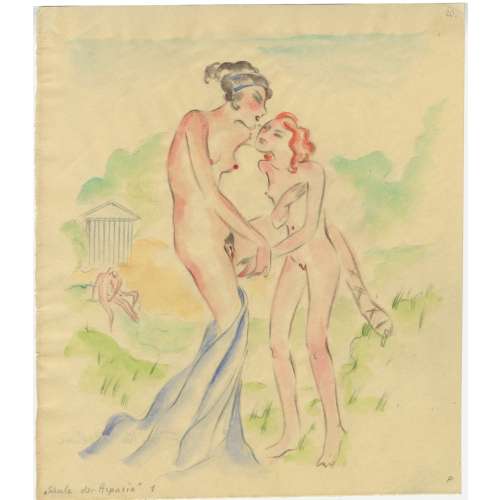 NEWPencil and watercolour on paper 230 x 197 mm, pencil ms inscription in the bottom-left “Schule der Aspasia” 1 (2, 3), monogrammed “P” in the bottom-right, and “Erika Plehn” to verso. Apparently, illustrations for ‘Die Weisheiten der Aspasia’ also known as ‘Die Dirnenschule der Aspasia’ (Aspasia's prostitute school), an erotic novel by Fritz Thurn (Foregger), privately published in Vienna in 1923. Artist: Erika Plehn [née Erika Pinkus] (German, 1904 – 1988) Author: Fritz Thurn [Foregger zum Greiffenthurn] (Austrian, 1877 – 1938). Aspasia of Miletus (Greek, c. 464 BCE – c. 420 BCE)
NEWPencil and watercolour on paper 230 x 197 mm, pencil ms inscription in the bottom-left “Schule der Aspasia” 1 (2, 3), monogrammed “P” in the bottom-right, and “Erika Plehn” to verso. Apparently, illustrations for ‘Die Weisheiten der Aspasia’ also known as ‘Die Dirnenschule der Aspasia’ (Aspasia's prostitute school), an erotic novel by Fritz Thurn (Foregger), privately published in Vienna in 1923. Artist: Erika Plehn [née Erika Pinkus] (German, 1904 – 1988) Author: Fritz Thurn [Foregger zum Greiffenthurn] (Austrian, 1877 – 1938). Aspasia of Miletus (Greek, c. 464 BCE – c. 420 BCE) -
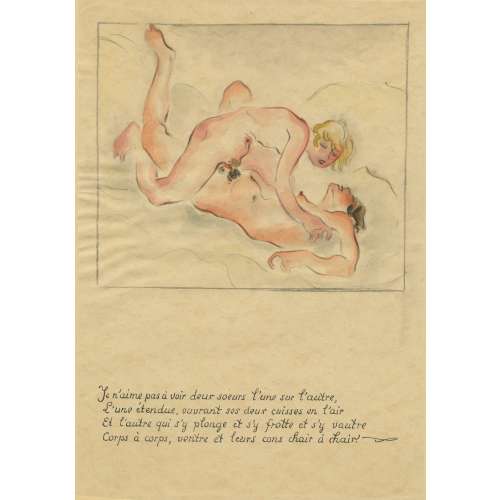 NEWFramed pencil and watercolour drawings with 4-line manuscript pen and ink French text under the frame on paper 255 x 175 mm mounted on card stock sheets 290 x 210 mm. Illustrations correspond to the 1st edition of Pierre Louÿs’ « Pybrac / Poésies » published by Cythère Au coq hardi in 1927 [LIB-3061.2022], pp. 25, 37, 64, 69, 85, 86, and 94. Illustrations here are placed in the order they would have appeared in the book.
NEWFramed pencil and watercolour drawings with 4-line manuscript pen and ink French text under the frame on paper 255 x 175 mm mounted on card stock sheets 290 x 210 mm. Illustrations correspond to the 1st edition of Pierre Louÿs’ « Pybrac / Poésies » published by Cythère Au coq hardi in 1927 [LIB-3061.2022], pp. 25, 37, 64, 69, 85, 86, and 94. Illustrations here are placed in the order they would have appeared in the book.- Je n’aime pas à voir deux sœurs l’une sur l’autre, L’une étendue, ouvrant ses deux cuisses en l’air, Et l’autre qui s’y plonge et s’y frotte et s’y vautre, Corps à corps, ventre à ventre et leurs cons chair à chair.
- Je n’aime pas à voir la douce concubine Qu’on encule toujours et qui, d’un doigt lascif Se branle le bouton, se tire la barbiche, Pour soulager son cul douloureux et passif
- Je n’aime pas à voir cette Sappho mascule Qui, dans sa chambre, habille une fille en garçon, Lui baisse la culotte et froidement l’encule Avec un godmiché plus gros qu’un saucisson.
- Je n’aime pas à voir la vierge au doigt lubrique Qui, les deux pieds en l’air, masturbe sur le lit Son pucelage en rut, gonflé, couleur de brique, Et décharge en baisant le roman qu’elle lit.
- Je n’aime pas à voir le garçon sur la fille Donner des coups au cul et danser le galop Aux applaudissements de toute la famille Qui dit : « Ça vient, putain ! Fais-la jouir, salop ! »
- Je n’aime pas à voir la princesse de Grèce, Qui, menée au bordel par sa fille d’honneur, Frotte sa bouche obscène au cul de la négresse Et crie en déchargeant : « C’est là qu’est le bonheur ! »
- Je n’aime pas à voir dans un bal de familles Que l’hôtesse dispose une chambre d’ami Et des lits de repos, au gré des jeunes filles, Pour sucer leurs danseurs ou se faire mimi.
-
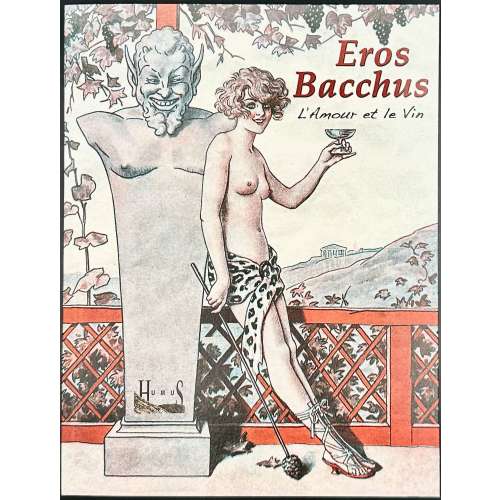 Bound in full-colour pictorial wrappers with French flaps, 250 x 190 x 35 mm, 1,311 g by weight, profusely illustrated volume, pp. [1-4] 5-427 [5], 216 leaves total. Title-page: {vignette} | EROS BACCHUS | L'amour et le vin | {publisher's device} || Exhibition at Château Musée du vin et de la vigne, à Aigle, du 24 mai 2014 au 28 février 2015. Text by Michel Froidevaux. Original description : Depuis l'apparition du vignoble, l'amour et le vin sont inséparables. Tantôt boisson des dieux, tantôt breuvage des poètes, le vin a la vertu de rapprocher les êtres. De la riche mythologie antique - Dionysos et Bacchus - aux fêtes des confréries contemporaines, le vin enflamme l'imaginaire et génère de la convivialité. L'idée est de proposer un parcours ludique et culturel, badin et savant pour aller par siècles et contrées à la découverte des plaisirs du boire et des méandres du désir. Livre richement illustré d'un millier d'images (dessins, objets, cartes postales,...) avec la participation d'une quarantaine d'artistes contemporains qui ont créé spécialement une œuvre. Machine translation: Love and wine have been inseparable since the dawn of the vineyard. Sometimes the drink of the gods, sometimes the beverage of poets, wine has the virtue of bringing people together. From the rich mythology of antiquity - Dionysus and Bacchus - to contemporary brotherhood celebrations, wine fires the imagination and generates conviviality. The idea is to offer a playful and cultural journey, both playful and learned, through centuries and lands, to discover the pleasures of drinking and the twists and turns of desire. The book is richly illustrated with some 1,000 images (drawings, objects, postcards, etc.), featuring works by some 40 contemporary artists.
Bound in full-colour pictorial wrappers with French flaps, 250 x 190 x 35 mm, 1,311 g by weight, profusely illustrated volume, pp. [1-4] 5-427 [5], 216 leaves total. Title-page: {vignette} | EROS BACCHUS | L'amour et le vin | {publisher's device} || Exhibition at Château Musée du vin et de la vigne, à Aigle, du 24 mai 2014 au 28 février 2015. Text by Michel Froidevaux. Original description : Depuis l'apparition du vignoble, l'amour et le vin sont inséparables. Tantôt boisson des dieux, tantôt breuvage des poètes, le vin a la vertu de rapprocher les êtres. De la riche mythologie antique - Dionysos et Bacchus - aux fêtes des confréries contemporaines, le vin enflamme l'imaginaire et génère de la convivialité. L'idée est de proposer un parcours ludique et culturel, badin et savant pour aller par siècles et contrées à la découverte des plaisirs du boire et des méandres du désir. Livre richement illustré d'un millier d'images (dessins, objets, cartes postales,...) avec la participation d'une quarantaine d'artistes contemporains qui ont créé spécialement une œuvre. Machine translation: Love and wine have been inseparable since the dawn of the vineyard. Sometimes the drink of the gods, sometimes the beverage of poets, wine has the virtue of bringing people together. From the rich mythology of antiquity - Dionysus and Bacchus - to contemporary brotherhood celebrations, wine fires the imagination and generates conviviality. The idea is to offer a playful and cultural journey, both playful and learned, through centuries and lands, to discover the pleasures of drinking and the twists and turns of desire. The book is richly illustrated with some 1,000 images (drawings, objects, postcards, etc.), featuring works by some 40 contemporary artists. -
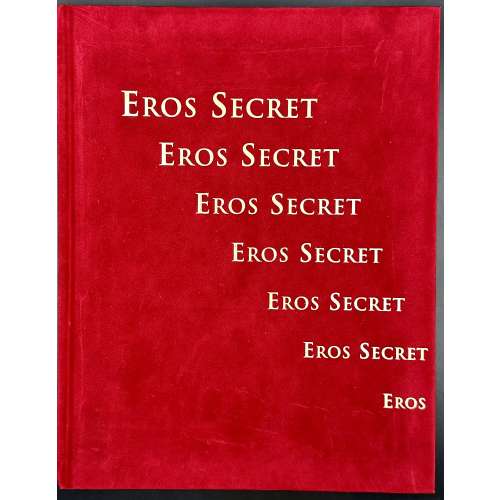 Hardcover volume, 290 x 225 mm, bound in scarlet velveteen with gilt lettering to front and spine, gilt vignette and lettering to back; pp.: [1-8] 9-204 [4], profusely illustrated; text in French and English. ISBN : 2-940127-37-9. Title-page (yellow on red paper): EROS SECRET | OBJETS EROTIQUES A TRANSFORMATION | EROTIC TRANSFORMATION OBJECTS | Photographies et chorégraphie : Véronique Willemin | Photographer and choreography || “The ensemble of 150 objects presented belongs to one single collector. The manner in which the author met him at the airport of Larnaca, then on a yacht in the Mediterranean sea, resembles more a novel by Gérard de Villiers than the preface of a curator but has its own touch of spice” [Art of the day Weekly].
Hardcover volume, 290 x 225 mm, bound in scarlet velveteen with gilt lettering to front and spine, gilt vignette and lettering to back; pp.: [1-8] 9-204 [4], profusely illustrated; text in French and English. ISBN : 2-940127-37-9. Title-page (yellow on red paper): EROS SECRET | OBJETS EROTIQUES A TRANSFORMATION | EROTIC TRANSFORMATION OBJECTS | Photographies et chorégraphie : Véronique Willemin | Photographer and choreography || “The ensemble of 150 objects presented belongs to one single collector. The manner in which the author met him at the airport of Larnaca, then on a yacht in the Mediterranean sea, resembles more a novel by Gérard de Villiers than the preface of a curator but has its own touch of spice” [Art of the day Weekly]. -
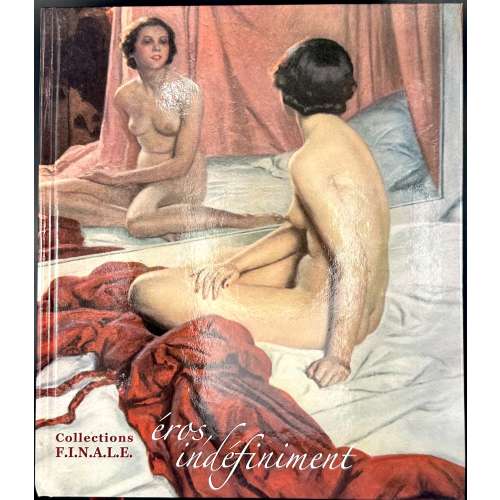 Hardcover volume, 297 x 256 x 40 mm, glossy pictorial boards, pp. [1-8] 9-428 [4], profusely illustrated, text in French. F.I.N.A.L.E. stands for Foundation Internationale d’Arts et Litératures Érotiques (Foundation of Erotic Arts and Literatures, established on December 12, 1996 in Lausanne, Switzerland. Title-page: éros, | indéfiniment | Collections F.I.N.A.L.E. | { HumuS, publisher’s device} ||
Hardcover volume, 297 x 256 x 40 mm, glossy pictorial boards, pp. [1-8] 9-428 [4], profusely illustrated, text in French. F.I.N.A.L.E. stands for Foundation Internationale d’Arts et Litératures Érotiques (Foundation of Erotic Arts and Literatures, established on December 12, 1996 in Lausanne, Switzerland. Title-page: éros, | indéfiniment | Collections F.I.N.A.L.E. | { HumuS, publisher’s device} || -
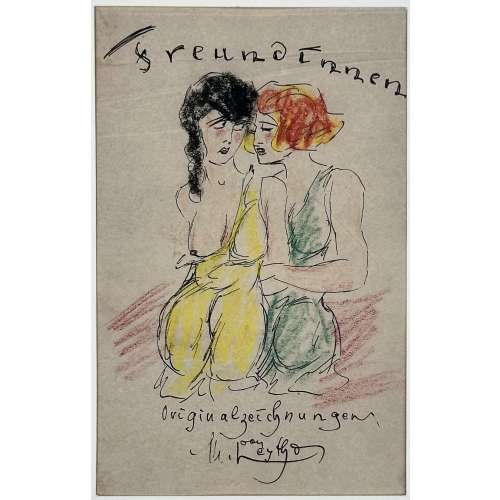 Seven pen and ink and colour crayon drawings on thin wove paper approx. 140 x 100 mm, each attached to a sheet 310 x 240 mm and mounted in a passepartout, placed in an aubergine cardboard folder 310 x 250 mm with a tan vellum spine and paper flaps inside; olive label with double border and gilt lettering to front cover "Dessins" [Drawings]. The first sheet is a title-page lettered in manuscript: Freundinnen | {vignette} | Originalzeichnungen | M. Leytho || [Girlfriends. Original drawings]. Information about the artist at www.honesterotica.com: "Mitja Leytho, almost certainly a pseudonym, is yet another mediocre yet fascinating amateur artist from the Germany of the 1920s about whom we know absolutely nothing beyond the four portfolios which bear the ‘Leytho’ signature". We shall notice that this set of drawings was produced by a talented professional, not an amateur.
Seven pen and ink and colour crayon drawings on thin wove paper approx. 140 x 100 mm, each attached to a sheet 310 x 240 mm and mounted in a passepartout, placed in an aubergine cardboard folder 310 x 250 mm with a tan vellum spine and paper flaps inside; olive label with double border and gilt lettering to front cover "Dessins" [Drawings]. The first sheet is a title-page lettered in manuscript: Freundinnen | {vignette} | Originalzeichnungen | M. Leytho || [Girlfriends. Original drawings]. Information about the artist at www.honesterotica.com: "Mitja Leytho, almost certainly a pseudonym, is yet another mediocre yet fascinating amateur artist from the Germany of the 1920s about whom we know absolutely nothing beyond the four portfolios which bear the ‘Leytho’ signature". We shall notice that this set of drawings was produced by a talented professional, not an amateur. -
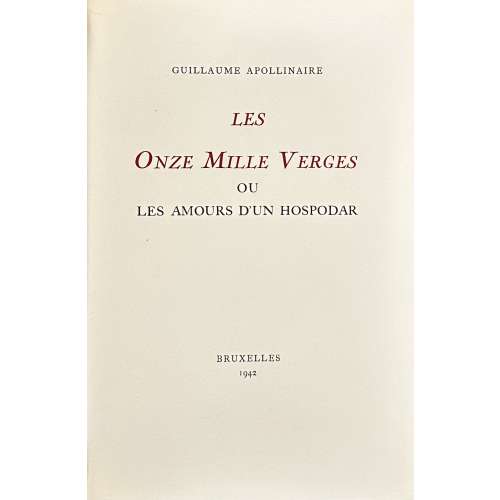 Softcover, 257 x 168 mm, publisher’s cream French flapped wrappers with red lettering to front in a beige double slipcase, printed on wove paper watermarked “Marais” in italic script; edges untrimmed; pp.: [8] [2] [1] 2-130 [131] [3]; collated 4to as 184, 72 leaves incl. those in the wrappers, plus 9 photomechanical stencil-coloured plates extraneous to collation and 9 b/w headpieces (in-text etchings) after anonymous artist. According to the seller and J.-P. Dutel: “In-8 of 130 pages... Illustrated with 10 full-page in colour and some headbands. Limited edition of 500 copies on vélin du Marais". Title-page (red and black): GUILLAUME APOLLINAIRE | LES | ONZE MILLE VERGES | OU | LES AMOURS D'UN HOSPODAR | BRUXELLES | 1942 || Limitation: Il a été tiré de cet ouvrage réservé uniquement aux souscripteurs particuliers 500 exemplaires tous sur vélin du marais. Exemplaire n° 147. Edition: The clandestine edition on vélin de Marais paper limited to 500 copies for subscribers only; this copy is № 147. Catalogue raisonné: Dutel III № 2109. In my copy, similarly to the one of STEVE M., it is only 9 colour plates, while Dutel sites 10. Author: Guillaume Apollinaire (French, 1880 – 1918). Micro photo of a colour plate:
Softcover, 257 x 168 mm, publisher’s cream French flapped wrappers with red lettering to front in a beige double slipcase, printed on wove paper watermarked “Marais” in italic script; edges untrimmed; pp.: [8] [2] [1] 2-130 [131] [3]; collated 4to as 184, 72 leaves incl. those in the wrappers, plus 9 photomechanical stencil-coloured plates extraneous to collation and 9 b/w headpieces (in-text etchings) after anonymous artist. According to the seller and J.-P. Dutel: “In-8 of 130 pages... Illustrated with 10 full-page in colour and some headbands. Limited edition of 500 copies on vélin du Marais". Title-page (red and black): GUILLAUME APOLLINAIRE | LES | ONZE MILLE VERGES | OU | LES AMOURS D'UN HOSPODAR | BRUXELLES | 1942 || Limitation: Il a été tiré de cet ouvrage réservé uniquement aux souscripteurs particuliers 500 exemplaires tous sur vélin du marais. Exemplaire n° 147. Edition: The clandestine edition on vélin de Marais paper limited to 500 copies for subscribers only; this copy is № 147. Catalogue raisonné: Dutel III № 2109. In my copy, similarly to the one of STEVE M., it is only 9 colour plates, while Dutel sites 10. Author: Guillaume Apollinaire (French, 1880 – 1918). Micro photo of a colour plate: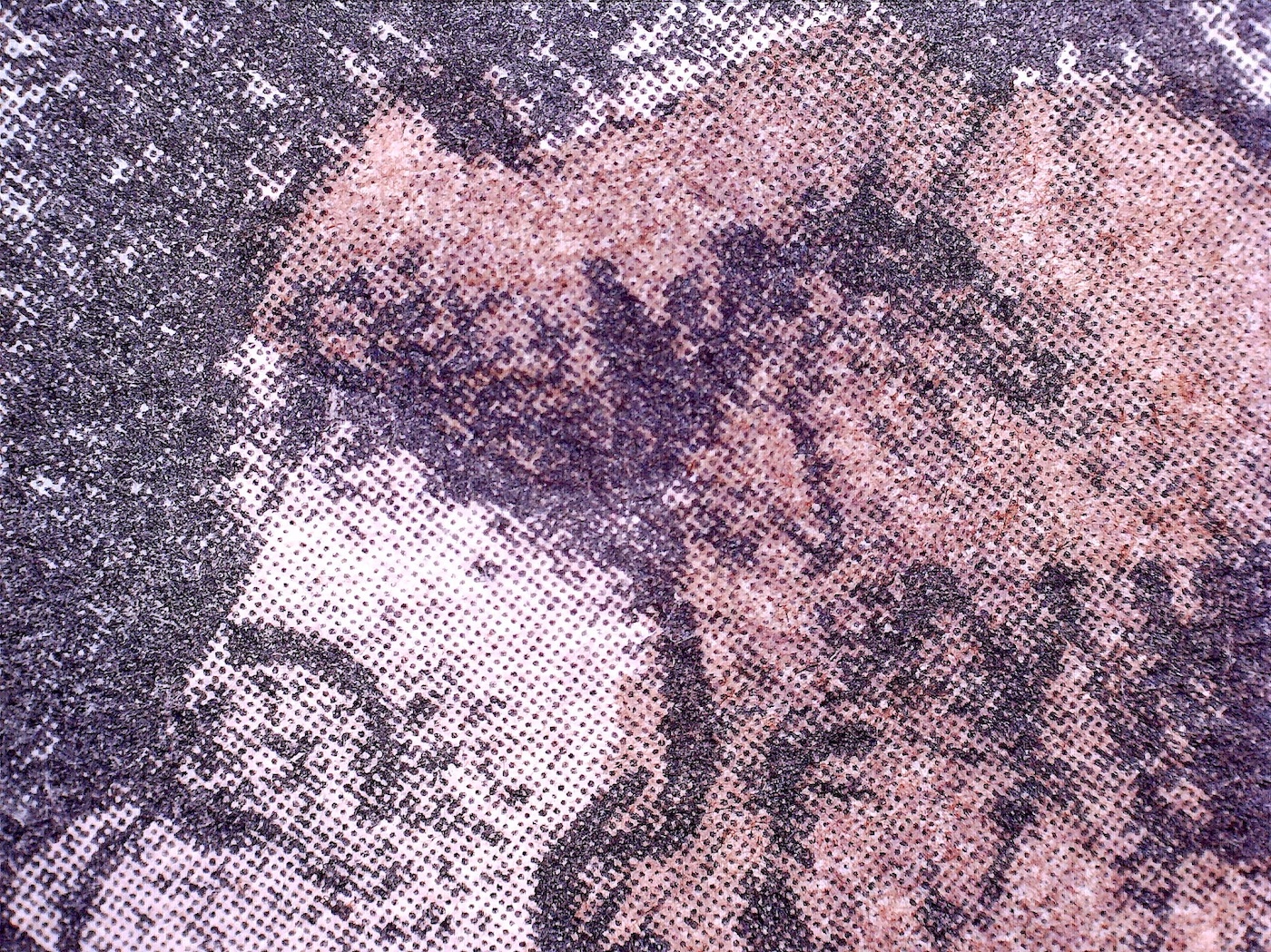 Micro photo of an etching:
Micro photo of an etching:
